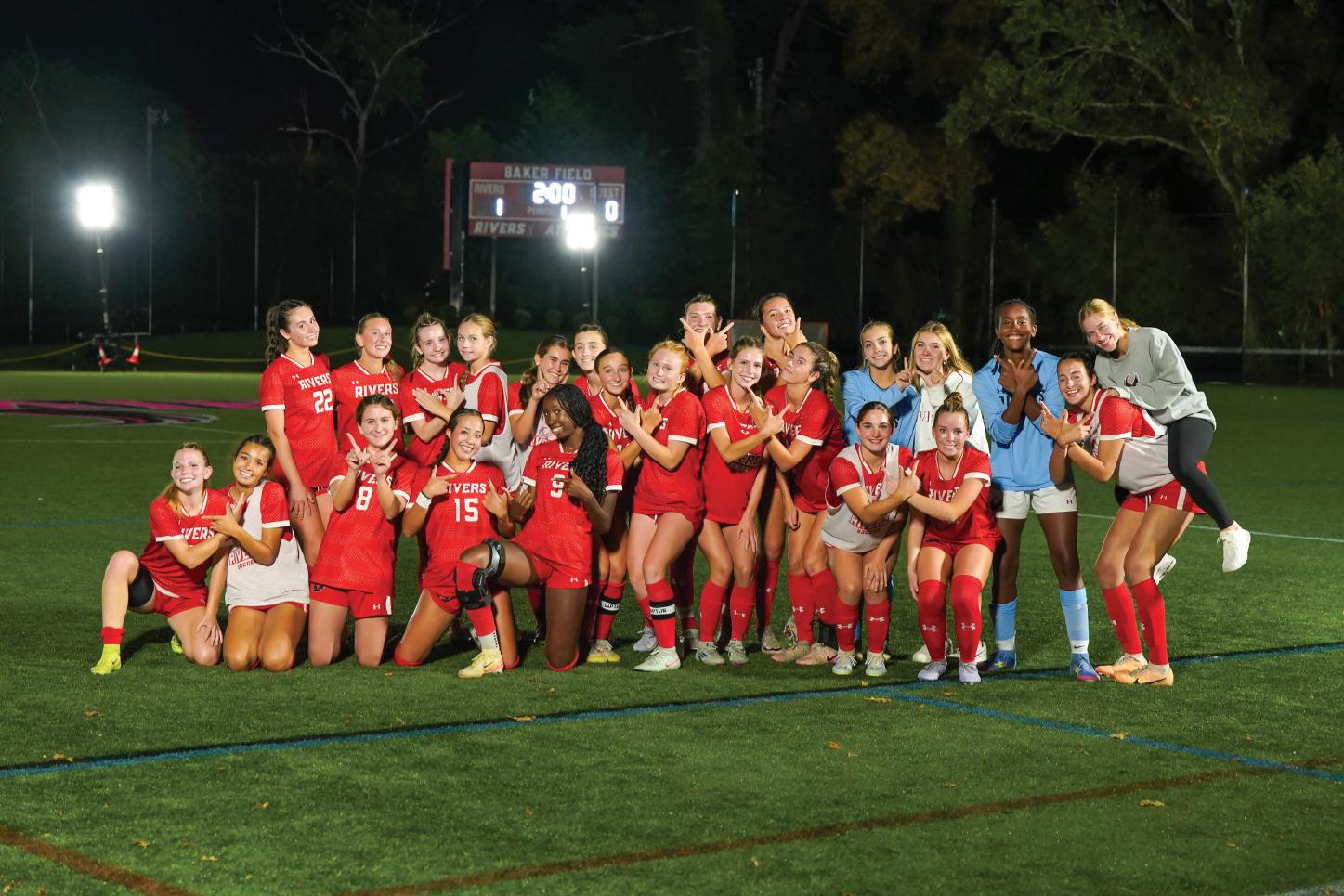
THE RIVERS SCHOOL | FALL 2025


THE RIVERS SCHOOL | FALL 2025
ALUMNI FIND LIVES OF PURPOSE IN EDUCATION
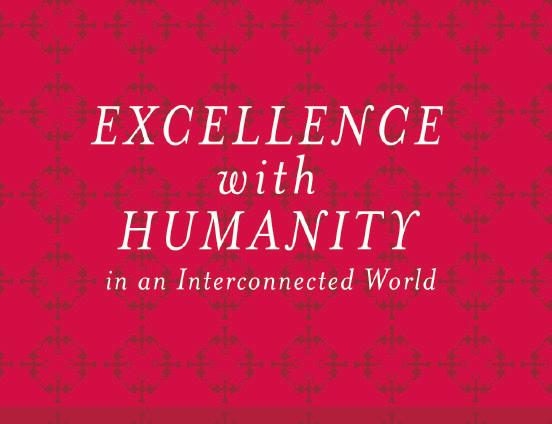

FEATURES
32 MISSION, CORE VALUES, STRATEGIC PLAN
A Q&A with Head of School Ryan S. Dahlem
26 ALUMNI EDUCATORS Called to a life of purpose
SENIORS IN MEGHAN BROWN’S English elective, “Mad Women,” started the first day of school discussing the theme of “likeability” as it relates to women in literature.
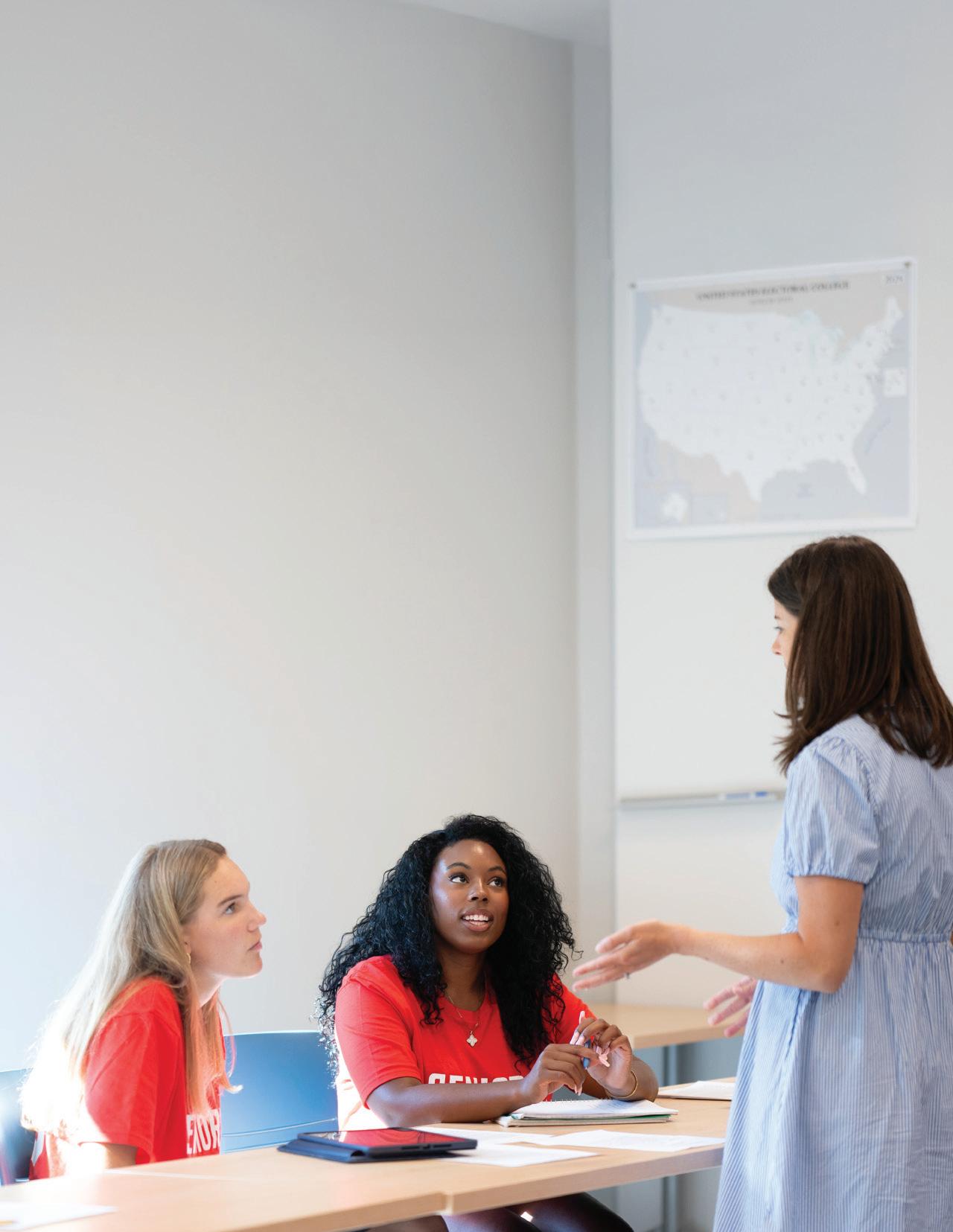
Five Questions for Karin Narcisse Stafford P’26, ’28, associate director of admission and director of multicultural outreach
Ben Leeming P ’17, ’19, ’21, ’23, History Department chair and Jarzavek teaching chair
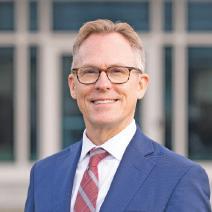
“It is the supreme art of the teacher to awaken joy in creative expression and knowledge.”
–ALBERT EINSTEIN
AS WE DIVE INTO a new academic year, I am again inspired by the central role our talented educators play in shaping the distinctive Rivers experience. Whether in classrooms, rehearsal halls, and studios, or on athletic fields and courts, our students are guided daily by individuals who are deeply invested in their craft. At its heart, Rivers is a community built on relationships, and the influence of great educators makes those relationships transformative.
My parents were both educators, and I grew up deeply appreciating and respecting their vocation. Dinner table conversations were often about school, and I witnessed my parents’ heartfelt dedication and the immeasurable impact they had on the lives of their students. This shaped my own sense of purpose and led me to pursue education as a calling. Teaching is not just a career—it is an act of service and a way to give back, helping the next generation of young people discover their fullest potential as we pay forward the impact of educators who shaped our own lives.
At Rivers, our extraordinary educators embody the philosophy of Excellence with Humanity. They balance high expectations with compassion and support, challenging students to stretch while ensuring they feel cared for and known. You see this in classrooms, where teachers encourage students to engage with complex topics and reframe mistakes as opportunities for growth. You feel it in advisories, where relationships are fostered to create smaller communities within the broader student body, and in arts and athletics, where supportive connections transcend classroom walls.
The lasting impact of these relationships is especially evident in the stories of our alumni educators featured in this issue of the Riparian—individuals whose own lives of purpose were ignited by their teachers at Rivers. Whether
teaching in classrooms far afield or right here on campus, the spirit of Rivers lives on in their work of timeless influence.
We are also excited to share our new strategic plan that builds on the strong momentum at Rivers and positions us for a bold and exciting future. The plan serves as a road map for fulfilling our revised mission: “Rivers inspires every student to pursue excellence, thrive in a community of connection and belonging, and create their own path to a life of impact and purpose.” The comprehensive planning process also entailed expanding our core values to include integrity, perseverance, empathy, curiosity, and joy. These values serve as guideposts for us as a community, and they are traits we aspire to instill in our students that will serve them well, both now and into the future.
As you read about the development of the strategic plan, mission, and core values, and the stories of alumni who have answered the call to teach, you will note an underlying theme of Rivers’ enduring impact. I am grateful for the support of all those who make the Rivers experience uniquely “Rivers”—our dedicated professional community, families, trustees, and alumni. We are shaping a vision that honors our abiding philosophy while preparing students for their future. Thank you for joining in this deeply meaningful and lasting work.
With gratitude,
Ryan S. Dahlem Head of School
VOLUME XL NUMBER 1
HEAD OF SCHOOL
Ryan S. Dahlem
MANAGING EDITOR
Alexandra Ghiz
ASSISTANT EDITOR
Grace Ramsdell
DIRECTOR OF MARKETING AND COMMUNICATIONS
Colette Porter
DIRECTOR OF FAMILY AND ALUMNI ENGAGEMENT
Janet McKeeney
CONTRIBUTING WRITERS
Jane Dornbusch, Ethan Fowle, Alexandra Ghiz, Colette Porter, Erin Prichett, Grace Ramsdell, Jacob Werrick ’16
CONTRIBUTING PHOTOGRAPHERS
Rachael Chen, Kristie Rae Dean, John Hurley, Tom Kates, Grace Ramsdell
CREATIVE DIRECTOR
Ianka De La Rosa
The Rivers School 333 Winter Street Weston, MA 02493-1040
781.235.9300 www.rivers.org
RIPARIAN: “One that lives or has property on the bank of a river or lake.”
If your contact or mailing information has changed or if you need additional copies mailed to you or other members of your family, please let us know at advancement@rivers.org.

“ I made this cyanotype by experimenting with flowers. I painted on the light-sensitive cyanotype coating, and I used petals to make shapes when I exposed the print. Then I cut out some of the darkened area to make the focus on what was left.”
—LOLA BOUDREAU ’26
To read more about cyanotype prints made by students in Advanced Photography last spring, see page 14.

ANNUAL PHILANTHROPIC SUPPORT fuels the excitement and discovery that are central to a Rivers education—underpinning everything from equipment and materials for hands-on learning, to guest speakers that enhance our curriculum, to professional development that supports our outstanding community of teachers, advisors, coaches, and caring adults. Through the strength of this community, every student is empowered to pursue their passions, find joy in learning, and thrive—in no small part due to the support of The Rivers Fund.
The Rivers Fund touches nearly every aspect of the Rivers experience. Join our community of generous donors who provide critical resources for classroom enhancements, extracurricular activities, experiential learning, and more by making a gift of any size.
To learn more about how The Rivers Fund supports teaching and learning at Rivers, as well as many other aspects of school life, visit our website, rivers.org/giving.

Make your gift to The Rivers Fund today!

CLEAR SKIES AND warm smiles welcomed the Rivers community on Tuesday, September 2, with new and returning students and teachers greeting each other bright and early on the first day of the 2025–26 academic year.
A spirited welcoming crew of administrators and members of the Class of 2026, instantly recognizable by their red “Last Dance” T-shirts, greeted the drop-off line with positive energy before heading into classes. For the Middle School, it was also the first day of Leadership Lab—a threeday exploration of what it means to be
a leader and how to “show up” in the Rivers community.
By mid morning, the entire school community had come together for the first all-school meeting of the year. Student body co-presidents Lily Chung ’26 and Nolan Killman ’26 welcomed the full assembly in Kraft Dining Hall and set a shared goal for the Rivers community going forward this school year: branching out.
Head of School Ryan S. Dahlem echoed the warm welcome and gave a special introduction to Rivers’ new students and new members of the professional community, as well as
acknowledging the seniors on their last first day.
“The start of a school year is always inspiring. All of our journeys are interconnected. We are better as individuals by being in the Rivers community together,” Dahlem concluded.
It was the perfect day for our Red Wings to take flight for the year! R
THE CODE TO VIEW A GALLERY OF PHOTOS

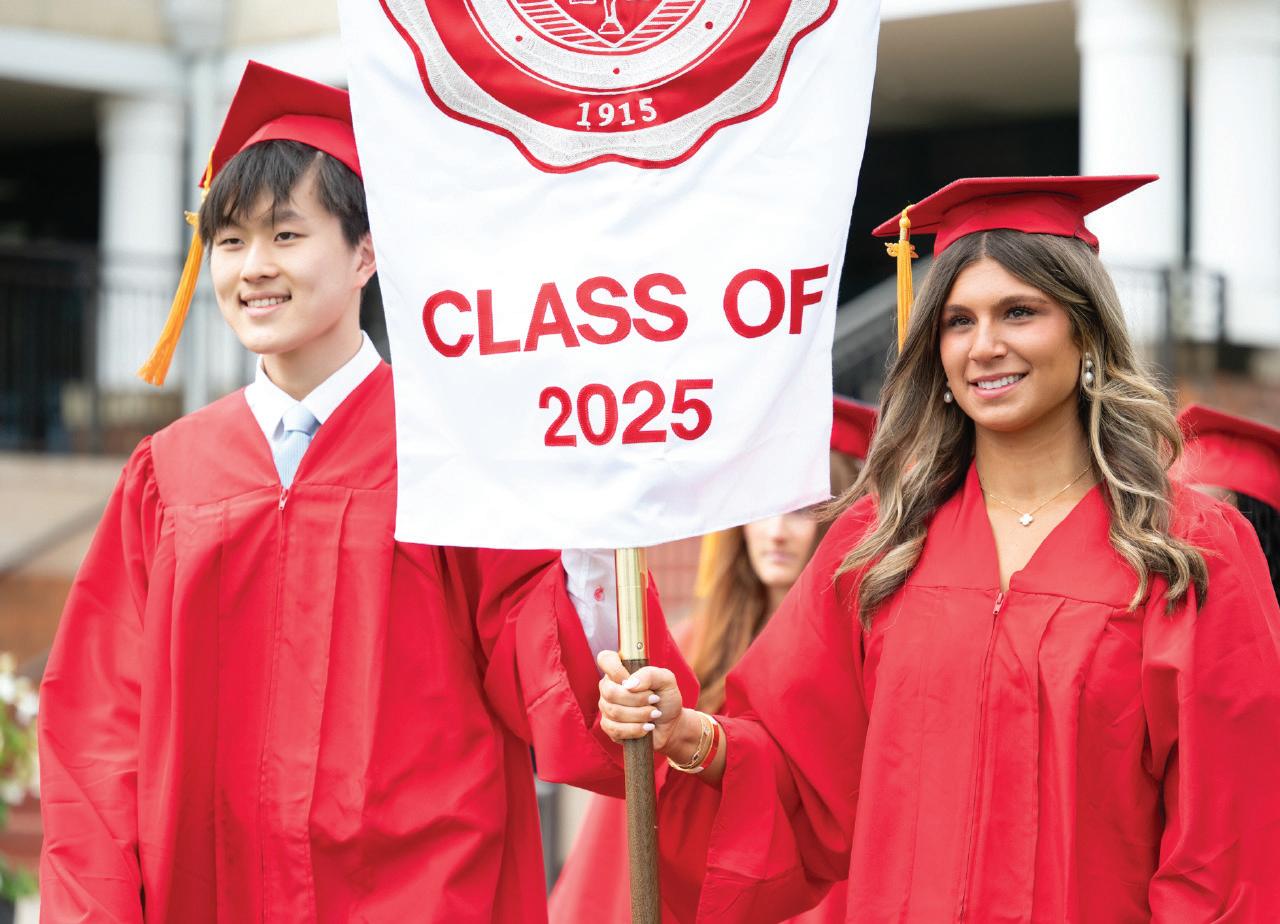
CELEBRATING THE CLASS OF 2025
SPIRITS WERE HIGH on a chilly day in May as the community gathered to celebrate the Class of 2025 under the tent on Lank Quadrangle for the 102nd graduation at The Rivers School. In his opening remarks, Head of School Ryan S. Dahlem mused that the day’s unseasonable chill was an opportunity to “connect with our school’s history more deeply,” calling back to Rivers’ days as an open-air school.
Dahlem spoke about living a life of purpose. “Your job right now isn’t to have your sense of purpose all figured out,” he told the class. “The good news is, many of the ways you’ve engaged at Rivers already can serve as first steps in this journey.”
This year, the faculty speaker was math faculty member Victoria Mizzi, and the student speaker was Grace
O’Sullivan ’25, each elected by the class of 2025. Both emphasized lessons learned from and by the graduating class. Mizzi highlighted the leadership of the class and urged the graduates to be ready to revise their plans, take advantage of new opportunities, and build strong relationships. “As long as you continue to show up for those you love, the rest will follow,” she said. O’Sullivan challenged her classmates to approach their lives with curiosity and a willingness to learn, saying, “We have to make the decision to be eager in our search for life’s lessons.”
Three traditions concluded the event: a reading by Dahlem of tributes in recognition of each of the 92 graduates, a cap toss at the flagpole, and, despite the cold, a dash into Nonesuch Pond. R
CHRISTOPHER KIM AND ABBEY FIREMAN, co-presidents of the Class of 2025, led the graduation procession.
THE CODE TO VIEW A GALLERY OF PHOTOS

KARIN NARCISSE STAFFORD P’26, ’28 began her relationship with Rivers nearly 30 years ago as an Upper School French teacher, a grade dean, and an assistant coach for varsity field hockey. Midway through her Rivers career, she shifted to a role on the admission team as the director of multicultural outreach, where she leads the SOAR (Seeking Opportunities at Rivers) program, a recent initiative that gives prospective students from underrepresented groups an inside look at the independent school experience through two days of campus visits in the fall.
1. How does multicultural outreach tie into admission work? Multicultural outreach provides the institution with a strategic approach in attracting and yielding highly motivated and talented students from diverse backgrounds. There are families out there who have never heard of what a school like Rivers can offer. So then the question is, how do we begin to provide access to our schools for those families?
The SOAR program, now in its third year, came out of a conversation a few years ago with Director of Enrollment Management Yassine Talhaoui P’32 about how we can reach a wider demographic with our outreach efforts. By helping the community at large learn about independent schools, families learn they have options and access to educational opportunities they may never have considered before. And, while certainly we’d like these students to apply and enroll at Rivers, we also have a goal of helping families learn that these opportunities exist in the first place.
2. What are some successes of the SOAR program so far?
We received a record number of applications to SOAR last year. Of the SOAR students who applied to

Rivers and were admitted, 100% of those students chose to attend. Behind those numbers, though, is a story of connecting with families and connecting with students, and that in itself is so rewarding.
3. What is the most challenging part of your work? Most rewarding? Outreach work in itself is challenging, but that is an incentive, something that motivates me. The most rewarding part, to me, is knowing that there are families who now know about Rivers. It’s having a parent say, “Thank you for helping me,” whether or not their child gets in.
4. You started here as a French teacher. Now that you aren’t in a classroom role anymore, how do you interact with students? Much of my student interaction is now as an advisor, which I think is one of the most important roles. As an advisor, you’re in a trusted position of watching and helping a young person grow up and learn about themselves. You are a part of their journey at an important time in their lives; it’s something we take very seriously.
5. Your kids go here now— Summer ’26 and JR ’28. What has that been like for you?
Watching my kids go through the Rivers experience has been really rewarding. It’s a special experience when the things you hope and dream for Rivers for other children are happening for your own child. That, I think, drives my passion for the school and makes me want to keep providing excellence and thinking innovatively. R
THE MIDDLE SCHOOL PLAYERS delighted audiences with their colorful performance in the Black Box Theater.
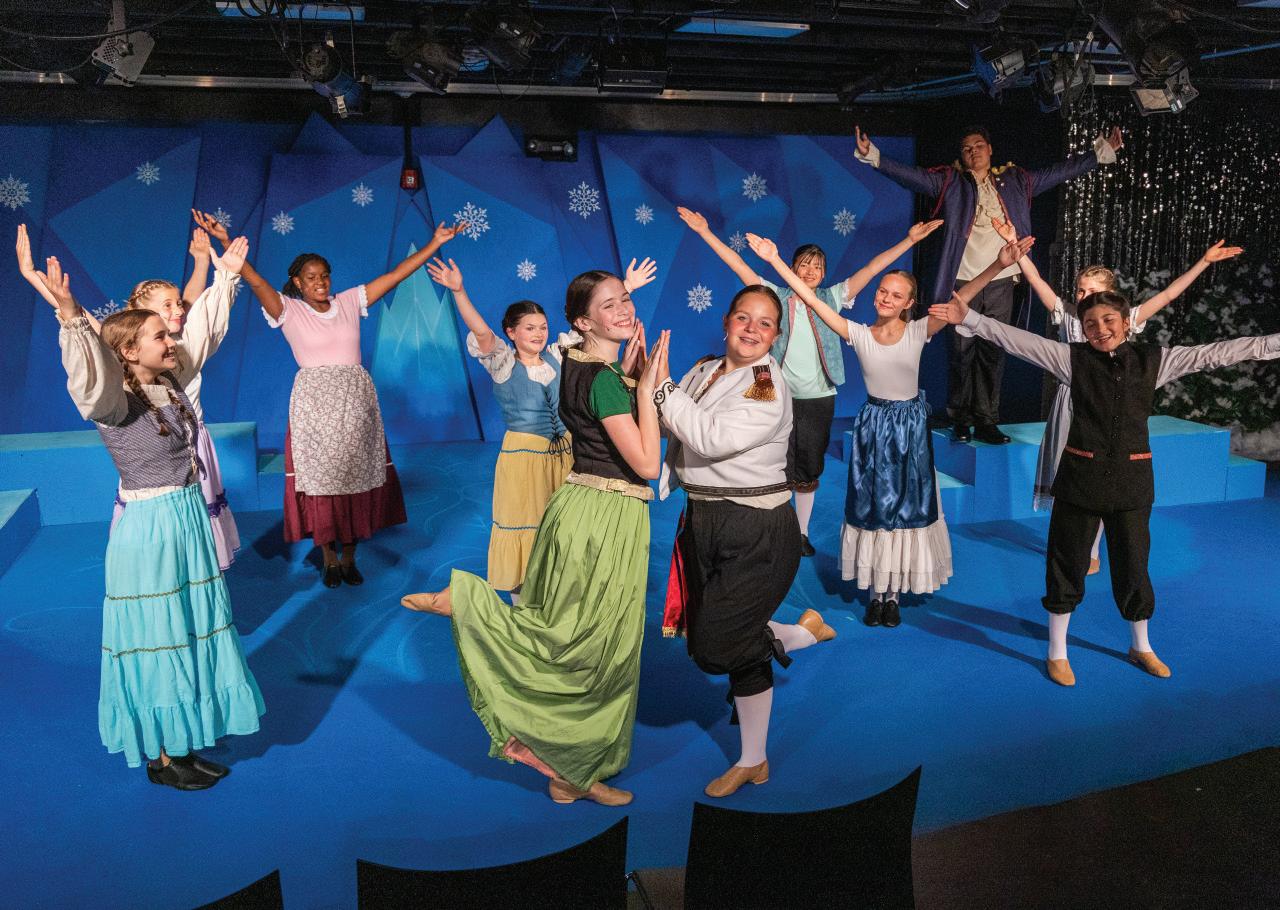
LAST MAY, HEARTFELT performances transported audience members from the Black Box Theater into the magical world of the Middle School spring musical, Frozen Jr.—a condensed, hour-long version of the Broadway musical Frozen, based on the 2013 movie. The story follows Princess Anna’s journey to end the sudden winter set off by her sister, Queen Elsa, in the fictional Nordic kingdom of Arendelle. Frozen Jr. features classic songs from the movie, like “Let It Go,” and additional songs from the Broadway adaptation. The cast was composed of 17
students, each playing more than one role in the production—the actor you saw as a townsperson in the last scene might be part of the snow chorus in the next. Alma Peña ’31, Andersen Leggett ’31, and Diana Lee ’30 played Elsa, and Charlotte Hardgrave ’30, Alice Finn ’31, and Maggie Tompros ’30 played Anna, representing the characters at different ages in the narrative. James Ge ’30 played Kristoff, the ice salesman who joins Anna on her journey. Leighton Giangrasso ’30 and Evelyn Paulsrud ’31 brought the laughs as Olaf the snowman and Sven the reindeer.
“The moments that often stand out for me each year aren’t always the ones that the audience sees,” said librarian and drama teacher Diane DeVore P’22, who directed the show. “It’s watching new friendships form during the preshow dinners, the musical medley sing-alongs before rehearsals, the way the students support and encourage one another backstage, and witnessing their performances and characters grow over the rehearsal process.” R
THE CODE
TO VIEW A GALLERY OF PHOTOS

Excellence, Character, and Community

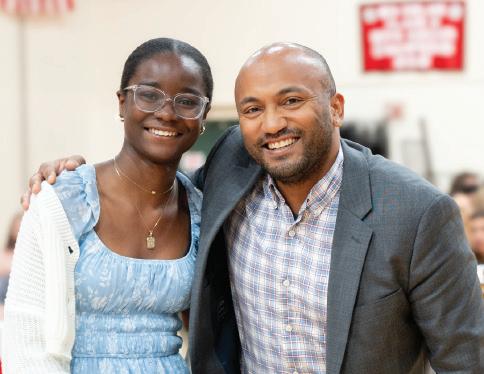
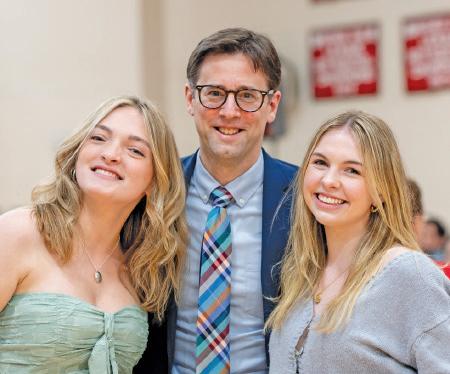

THE CODE TO VIEW A FULL LIST OF PRIZES

ON MAY 22, the Rivers community gathered for the annual Prize Day ceremony honoring students and members of the professional community. The Faculty Prize, Rivers’ highest honor, went to Cailyn Kim ’25. The Dudley H. Willis Trustee
Prize was awarded to Teddy Foley ’25 and Andrew Ho ’25. The Jeremiah J. Sheehan Prize went to Grace O’Sullivan ’25. The Hooper Lawrence Memorial Prize was awarded to Leah Jin ’25. The F. Ervin Prince Award for a top Middle School student went to
Danique O’Mensah ’29. Ryan Altman ’25 received the James A. Navoni ’70 Athletic Prize, and Lindsay Morin ’25 received the Priscilla Wallace Strauss Athletic Prize. All in all, the ceremony celebrated community, character, and the enduring spirit of Rivers. R
LAST SPRING, the Class of 2031 participated in two annual events from the world and water unit of the Grade 6 humanities curriculum: the Water Walk and the presentation of final water projects. Guided through the yearlong unit by Grade 6 humanities teacher Sarah Cohen P’25, ’26,
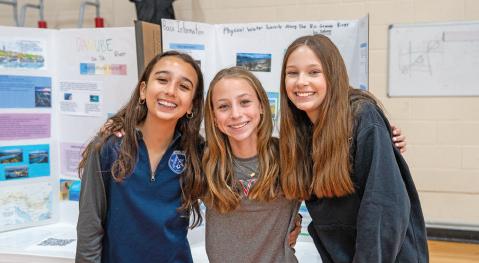
students took a deep dive into the environmental, economic, and societal forces impacting that affect global freshwater systems, examining topics such as water scarcity and pollution.
At the Water Walk in early May, Grade 6 students taught other Middle School students and members of the
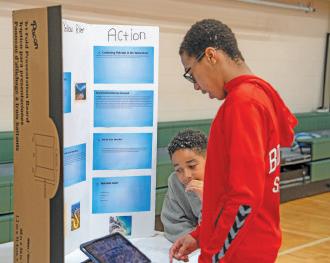
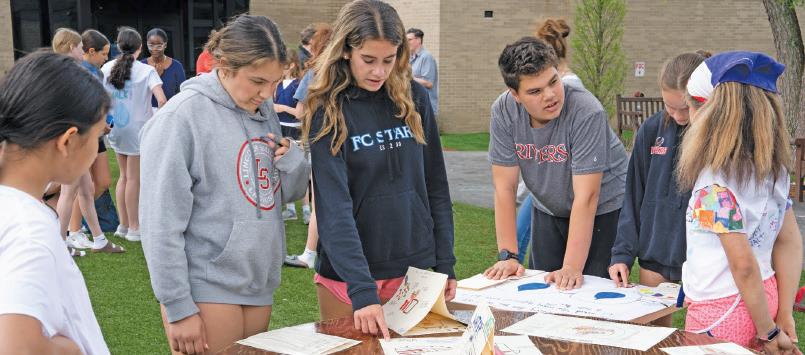

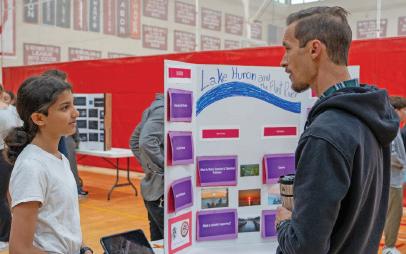
“ Each presentation reflected the individuality of the student behind it, shaped by their curiosity, compassion, and growing understanding of the world.”
–SARAH COHEN P’25,
’26
professional community about water issues through activities, games, and demonstrations at outdoor stations on campus. Later in May, the students presented final projects in Benson Gymnasium. Each student researched a body of water and created original artwork inspired by it, resulting in posters that were informative, artistic, and personal.
“Each presentation in our culminating water project reflected the individuality of the student behind it, shaped by their curiosity, compassion, and growing understanding of the world,” said Cohen. “The projects addressed complex environmental challenges with courage and clarity, and what stood out most was how students supported one another while pursuing their own interests.”
The world and water unit gives Grade 6 students the opportunity to explore local and global environmental issues, and to demonstrate their commitment to working together to make a positive impact. “The students didn’t just learn about water issues,” said Cohen. “They imagined solutions, asked bold questions, and reminded us that hope and action go hand in hand.” R
LAST SPRING, STUDENTS in Andrea Villagrán’s Spanish V class solved an escape room exercise, using teamwork and the Spanish language to crack codes and “escape.” The experience immersed them in the Spanish language and in themes from the curriculum. And they didn’t even have to leave Rivers—candles, props, mood lighting, and mysterious music transformed the classroom. The rules: Speak only in Spanish, work in groups, and have fun!
Villagrán has been leading the exercise for years. “When I started this module, we used to take the students to an escape room outside of Rivers,” she said. That escape room was run in English, but students were
directed to speak Spanish for the exercise. Villagrán noticed they were sometimes shy about doing that in the new setting, so, she created her own experience at Rivers tailored
to the Spanish V curriculum, which explores why cultures and individuals use narrative and art as escapes from reality. R

LAST APRIL, RIVERS WELCOMED
17 students from Lycée International Georges Duby in Luynes, France, as part of a longstanding exchange program offered to Rivers students from Grade 9 through Grade 11. For two weeks, the visiting students became part of the Rivers community, staying with host families, attending classes, and exploring Boston. “I’m so thankful for [my] host family and Rivers,” one student said. “I saw many classes like math, biology, French, and English that I also have in France, and I also saw other classes, such as data science and music, that I don’t have.” In June, Rivers students completed their end of the exchange, reuniting with the French students in Aix-en-Provence to learn about French culture.
LAUNCHED IN FALL 2024, the STEM Seminar program gives sophomores early access to specialized courses in engineering, data science, computer science, or robotics. Graded on a passfail basis, the seminars focus on hands-on, exploratory learning. “It allows the students to get their feet wet and be exposed to STEM concepts at an earlier stage, before their schedules fill up with AP courses in junior and senior years,” said science faculty member Yoshi Fujita.
At the end of the semester, students
present projects to the community in a science fair style. Last spring, Jack Burkhead ’27 shared a spring-hinge lockbox designed and 3D printed in his engineering seminar. “It was fascinating to learn how things are designed,” he said. “I spent 80 percent of my time just measuring and adjusting dimensions.” Though he admitted his creation wasn’t necessarily better than commercial products, Burkhead was proud. “It’s not perfect, but I did design it myself,” he said. “I’m happy with it.” R
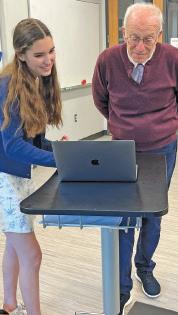
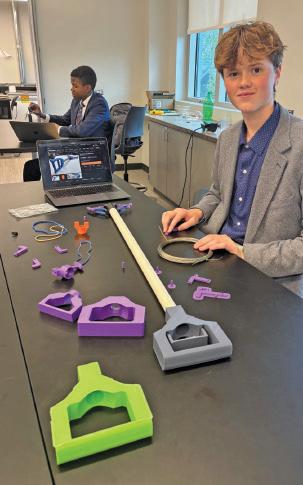
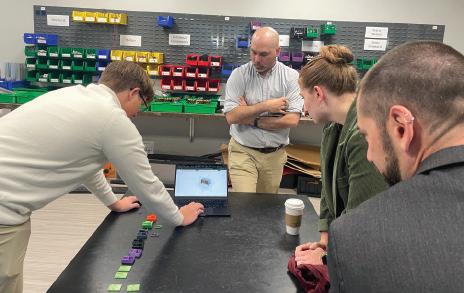
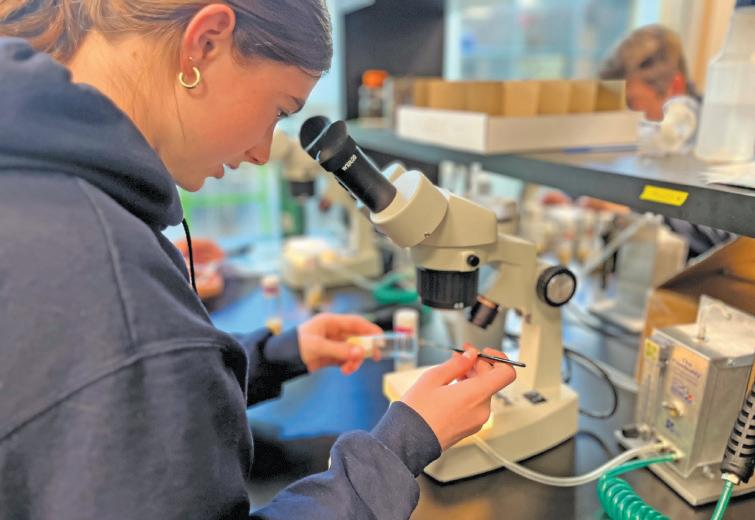
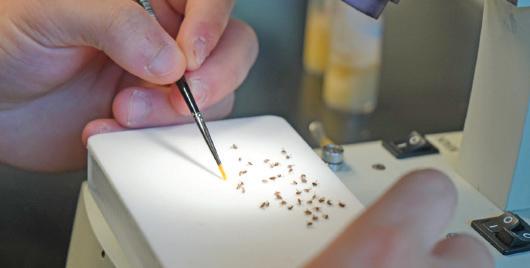
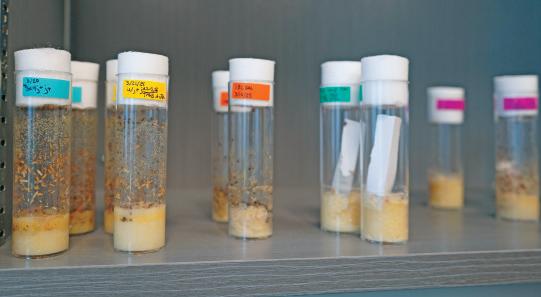
LAST YEAR IN SEQUOYAH REYNOSO’S HONORS RESEARCH SEMINAR for seniors, students maintained a fruit fly colony for genetic research as part of Stanford’s Stan-X program. They created new strains of transgenic fruit flies—using a non autonomous transposon or “jumping gene” called SX4—that will be stored and used in collaboration with scientists across the country. Using the resources of The Revers Center and with the help of external experts, Rivers students are able to conduct college- or graduate-level research that can have an impact on medical treatments.
THE COMMUNITY ENGAGEMENT FELLOWS program addresses a need in the broader community while building students’ leadership skills through hands-on experience. The program was created to support students who are passionate about causes that extend beyond traditional campus offerings. Eight juniors participated in its first year.
Each fellow partnered with a nonprofit organization, mapped out projects and budgets (fellows were allotted $500 each), recruited and trained volunteers, and implemented a project with realworld impact.
“It’s truly a win for our fellows, their peers, and the communities they served,” said Lucas Malo, director of community engagement. “I am excited to see how the program evolves as we continue to live out ExcellencewithHumanity.” R
AT THE ANNUAL RIVERS GIVERS check presentation ceremony in May, the student-driven philanthropy club awarded grants to three local nonprofits. Rivers Givers raised $5,000, which Rivers matched for a total of $10,000 in grants.
The club gave $4,000 to Circle of Hope, which provides clothing and supplies to people experiencing housing insecurity. Dress for Success Boston received $4,000, supporting its mission to help underresourced women achieve financial stability and navigate successful careers. High Spirit East Community received $2,000, which will go towards its work to create a family-style residential and work-life community for young adults with disabilities.
“Rivers Givers is such a special program because it has provided a deeper understanding of philanthropy by guiding me through each part of the process, including fundraising, reviewing grant proposals, and conducting site visits,” said Spencer Gary ’25, one of the senior leaders in the 2024–25 cohort. “This program has also shown me how effective leadership and collaboration can lead to lasting change in communities.” R

MEMBERS OF RIVERS GIVERS, along with club advisors Lucas Malo and Julia Wills, (BACK ROW FROM LEFT) welcomed representatives from Circle of Hope, Dress for Success Boston, and High Spirit East Community to award them their grants in May.
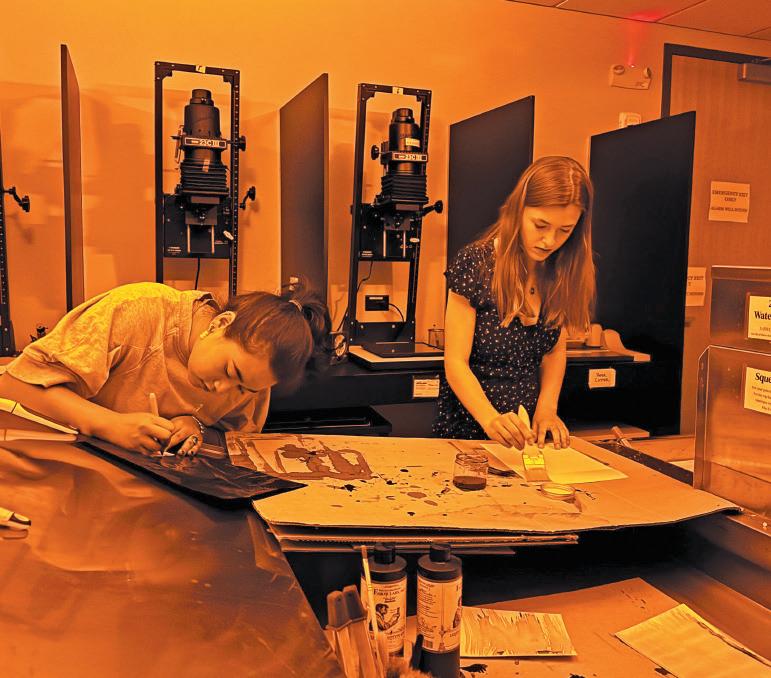
AS PART OF A UNIT on cameraless photography last spring, Sophie Lane’s Advanced Photography class experimented with cyanotype printing—an early photographic process characterized by the distinct blue color of the prints.
Contact prints such as cyanotypes are made by positioning objects directly on light-sensitive paper. Cyanotypes are specifically sensitive to UV light, so they are often exposed outdoors in sunlight, the technique the three students in the class—Lola Boudreau ’26, Maylea Harris ’26, and

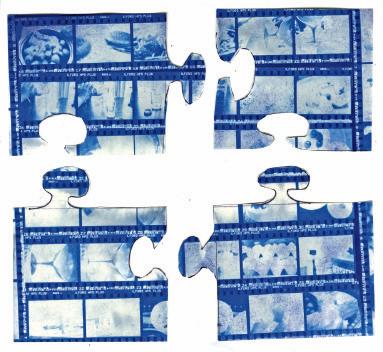
Kyle Nahabedian ’26—used on campus.
“In this class, I’ve really liked how we’ve gotten to try different things more than just taking photos,” Boudreau said. “With the cyanotypes, we’re experimenting a bit more.”
Nahabedian noted that one of the first things that comes to mind when he thinks of photography is cameras, so exploring a cameraless photographic process was totally new.
By the end of the unit, the students had all created beautiful prints—but for this group, the project ended up being less about final results and more
about exploration. “A lot of high school students’ academic lives focus on the outcome, the product,” Lane said. “The fact that they were able to embrace open-endedness and experimentation over perfectionism was special and rewarding, and much more true to life.”
Lane added that this experience is a good example of what can happen when juniors and seniors keep art in their schedule. “At that level, the skills are there already—it’s more about getting immersed in a process and a concept and finding their voice as unique individuals,” she said. R
Forming Intergenerational Friendships
EACH SPRING, RIVERS welcomes almost 100 guests to campus weekly for the Sages & Seekers program, which pairs older adults from the wider community (Sages) with high school students (Seekers) to break down generational barriers and encourage curiosity and connection through conversation. At the end of the seven-week program, each Seeker honors their Sage with a tribute speech summarizing the Sage’s life experiences and words of wisdom.
Rivers first participated in the program in 2009, and it has become a signature unit within the Grade 10 English curriculum. “We all have something to connect with another human about,” said Director of Community Engagement Lucas Malo, “but unless you make the space for that conversation to happen, you may never know.” R
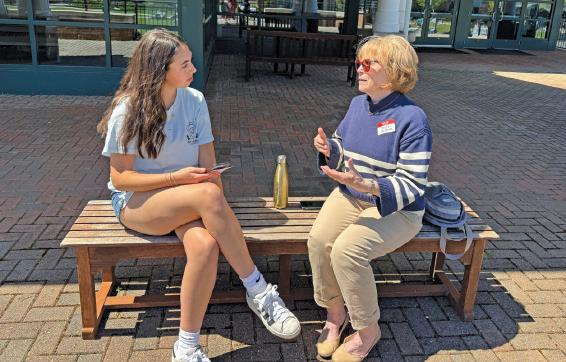
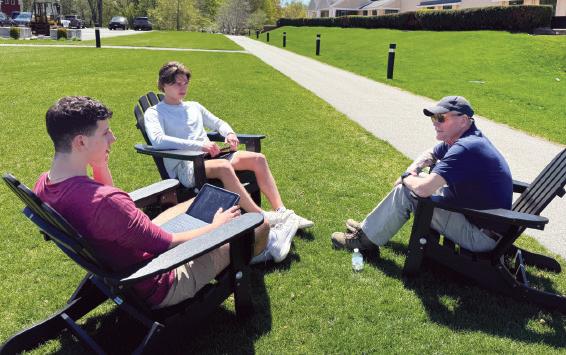

GLOBAL FAIR IS an annual celebration of the many cultures that make up the Rivers community, featuring home-cooked dishes, interactive activities, and performances on an evening in May. Small flags from around the world decorated Kraft Dining Hall, where attendees quickly filled their plates with Venezuelan arepas, tinga de pollo, tostadas, mujaddara, stuffed grape leaves, japchae, fresh dumplings, Chinese crullers, Italian cookies, Danish pastries, and more. Many of the dishes had special ties to family history.

In addition to the long table of food, stations set up throughout the room offered introductions to different cultural practices or to globally focused organizations at Rivers. Musical and spoken word performances provided entertainment and food for thought.
As it has for the past several years, the event ended with a traditional Ethiopian coffee ceremony led by sisters Eden Hossaena ’27 and Meron Hossaena ’28, with coffee beans roasted on site.
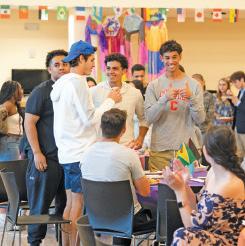
“Community is what makes the ceremony special and unique,” said Meron. R
Cornhole Tournament
IN MAY, OVER 200 parents and caregivers and members of the professional community gathered in the MacDowell Athletic Center for the first-ever “Toss It Up for Rivers” cornhole tournament.
In his opening remarks, Head of School Ryan S. Dahlem recognized the parent volunteers who made the event possible and helped transform the athletic center into a social venue full of lively competition and community spirit. Guests were treated to delicious food from Executive Chef Cory Campbell and his culinary team.
Congratulations to winners Michael Rand P’26, ’28 and Matthew Daly P’26 and to runners-up Kirsten and Jedd Morin P’25, ’26, ’31. As the evening wound down, participant Paul Kravitz P’28 expressed a sentiment shared by many: “Training for next year starts tomorrow!” R

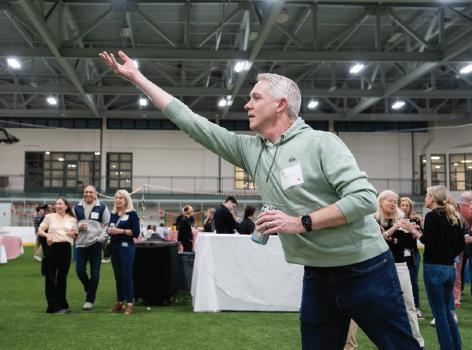
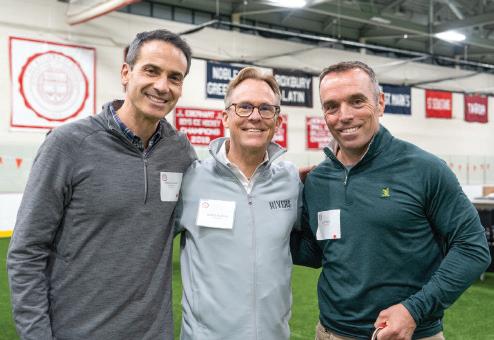
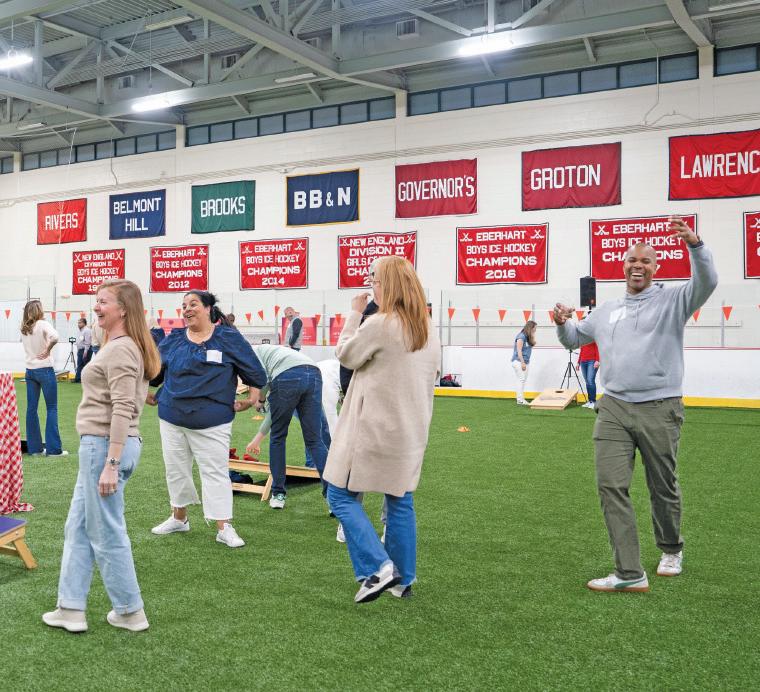
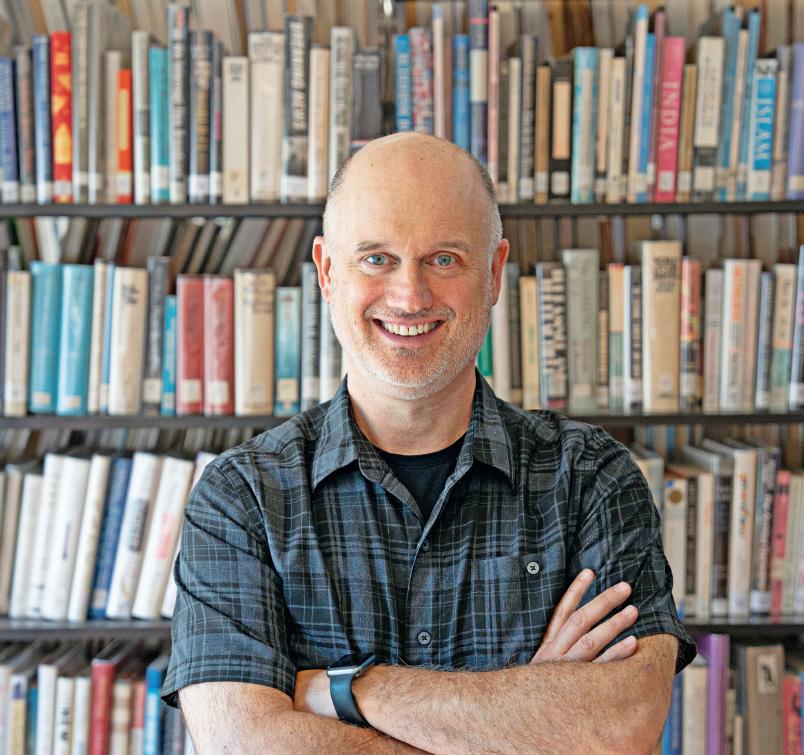
Getting to the Source of the Story
Chair Ben Leeming was preparing his dissertation for publication, a mentor invited him to consider a question that has stuck with him ever since: What is the story you want to tell?
“Reframing the dissertation from an academic exercise into terms of story, narrative, and audience was so helpful to me,” Leeming says. That shift informs how he structures his classes at Rivers, where he is also the John B. Jarzavek Teaching Chair. “My classes always begin with some kind of hook to make the student sit up and think,” he says.
Leeming’s first role at Rivers was filling in for Jack Jarzavek, teaching the senior art history elective while Jarzavek was on a one-year sabbatical in 1996. The close-knit and supportive environment at Rivers was a clear fit from the start, and Leeming ended up staying on full time. His undergraduate degree is in art history,
and after teaching for a few years, he was motivated to pursue a master’s in history at Harvard in the evenings and on weekends, during which time, he says, he made an important discovery.
“I learned that I loved research, and, in particular, getting into special collections, handling with my own two hands the materials that historians make history from,” he says.
A class on Mesoamerican civilization introduced him to Nahuatl, the language of the Aztec empire, which quickly became his primary research interest. Later, Leeming took his family to Mexico while he completed an intensive program to expand his study of the language and culture.
The experience cemented his desire to pursue a Ph.D.; he graduated from SUNY Albany in 2017 with a doctorate in historical anthropology, or ethnohistory, the study of Indigenous people from the past. He continues to
“
Humans have been telling stories for thousands of years— it’s how we engage with the world and knowledge.”
–BEN LEEMING P’17, ’19, ’21,
’23
speak about and publish his research—Leeming’s second book, The Americas’ First Sermons: The Nahuatl Sermonary of Fray Bernardino de Sahagún, a translation of early sermons written in Nahuatl, will be released this fall by the University of Utah Press.
That scholarly work has developed in tandem with Leeming’s work as a teacher, which he considers his primary calling. In recent years, he has shared his love for archives and special collections with students through the senior-level honors history seminar, “Native New England: Recovering Lost Voices in the Archive,” a semester-long course that brings much-needed attention to the presence of Black and Indigenous people in local history. Last spring, the seminar’s 10 students worked with the Framingham History Center, utilizing their archives for research and creating a publicly accessible history project that they presented to the Framingham community on the final day of class. Leeming also launched Rivers’ first archives internship with the center in the summer of 2025, and is eager to continue the momentum. Says Leeming, “I would love to find more ways to bring students into situations where they are confronting in person—and ideally with their own hands—the sources that have built history.” R
COLLEGE ENROLLMENTS
THIS FALL MARKS a new chapter for Rivers’ most recent graduates, who are matriculating at colleges and universities across the country. “The Class of 2025 did an outstanding job finding universities that align with their unique visions for their futures,” said Director of College Counseling David Lyons ’99, P’30. “Admission offices also saw the fit, and 86 percent of students applying through first-choice admission programs— early decision and restrictive early action—were admitted.”
Lyons added, “We are extremely proud of this class and excited to see all the hard work they put in during their time at Rivers recognized by such a diverse list of institutions.” Members of the Class of 2025 have enrolled at the following institutions:
Amherst College
Arizona State University
Auburn University
Babson College (2)
Barnard College
Boston College (8)
Boston University
Brown University
Bucknell University
Colby College
Colgate University (5)
College of the Holy Cross (2)
Colorado College
Connecticut College
Cornell University
Dartmouth College (3)
Dickinson College
Duke University
Elon University
Emory University (2)
Fairfield University (2)
George Washington University
Harvard University (2)
Lafayette College
Massachusetts Institute of Technology
Miami University Oxford
Northeastern University
Oberlin College
Princeton University (2)
Rollins College
Seton Hall University
St. Lawrence University
Stonehill College
Syracuse University (2)
Trinity College
Tufts University (3)
Tulane University (4)
University of Colorado (2)
University of Maryland (2)
University of Massachusetts Amherst
University of Massachusetts Lowell
University of Michigan
University of Notre Dame
University of Pennsylvania (2)
University of Pittsburgh (2)
University of Richmond (2)
University of Virginia (2)
University of Wisconsin
Villanova University (2)
Wake Forest University (3)
Washington and Lee University
Washington University in St. Louis (4)
William & Mary
Yale University

IN MAY, GRADE 10 students had the opportunity to hear from Isaac Jack Trompetter, a Holocaust survivor and an artist, after learning about the Holocaust through Art Spiegelman’s graphic novel Maus Born in Nazi-occupied Amsterdam in 1942, Trompetter was separated from his parents as an infant and sent into hiding. They reunited when he was 3. By supplying broader history and context throughout his detailed personal narrative, Trompetter painted a full picture for the audience.
Trompetter said when he finds himself thinking the worst of people, his family’s story reminds him that human beings are complicated and compassion is crucial. After his talk, Katie Henderson, director of diversity, equity, and inclusion programming and support and a teacher in the Grade 10 English program, asked: If the audience were to leave with one takeaway, what would Trompetter want it to be? “Four things,” he responded. “Love learning. Be kind. Be kind. Be kind—to yourselves and the rest of us.” R

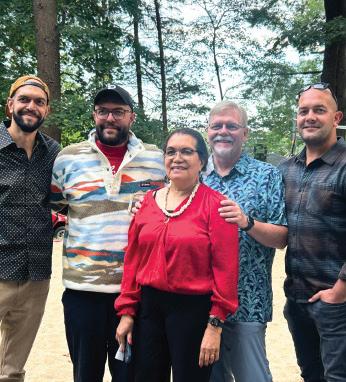

THE RIVERS SCHOOL AND CAMP NONESUCH communities gathered at the end of August to celebrate the remarkable career of Paul Karasch, who retired from his role as camp director after 33 seasons. The event honored his enduring legacy and the profound impact he has had on thousands of children over the years.
Since taking the helm in 1993, Karasch has been a champion for Camp Nonesuch’s founding principles: choice, responsibility, and calculated risk-taking. These values, envisioned by a small group of Rivers faculty members 45 years ago, have made Nonesuch a unique and beloved summer program. As one former camper put it, “Nonesuch is the best camp I’ve ever been to.” Karasch did far more than “direct”: He was the chief enrollment officer, parent ombudsman, facilities manager, and even the boat repairman. He navigated countless challenges, driven by a deep devotion to what Camp Nonesuch stands for. The celebration served as a fitting tribute to a man who, for over three decades, not only upheld the legacy of Camp Nonesuch but also contributed to it, leaving an indelible mark on the community. R
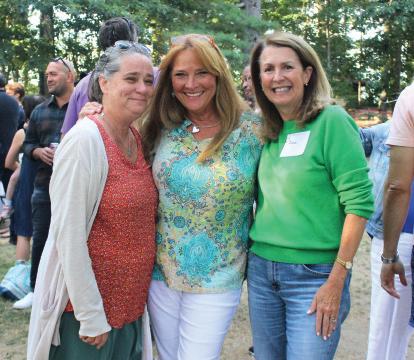
to page 36
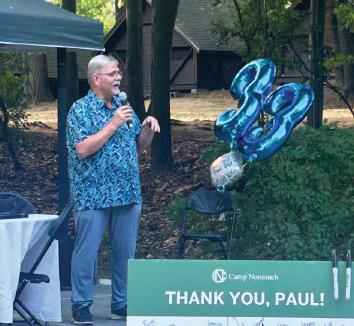

BEYOND CAMPUS
GUIDED BY ITS MISSION to inspire artistic excellence, The Rivers School Conservatory (RSC) prepares students for success far beyond its campus. This was evident over the summer, as students were accepted into prestigious music programs both locally and internationally.
Piano Department Chair Sandra Hebert brought 10 RSC students to compete and perform at the Cremona International Music Academy in Italy. Hebert said the students were well prepared for the event, and “they all played really, really well.” She added, “For some students, like William Wang in second grade, this was their first big competition, but all the opportunities William had here at RSC set him up to do great.” Closer to home, Henry Goldstein ’26 was accepted to study chamber music at Greenwood Music Camp in Cummington, MA, over the summer, and Alexander Ho ’27 joined the Wellesley Theatre Project for his ninth summer, starring as Hanschen in its production of Spring Awakening. Katherine Shaw ’26 and Anya Carroll ’26 took on lead roles in Weston Drama Workshop’s summer production of Les Misérables, playing Madame Thénardier and Fantine, respectively.
Carroll, who has performed with Weston Drama Workshop (WDW) many times, reflected, “Throughout my time in the program, I’ve learned to thrive under pressure and to channel stress and challenge into performance growth. My training at RSC, especially the demanding repertoire and frequent performances, has helped me build the confidence and technical skills needed for roles beyond RSC.”


LEFT: Anya Carroll ’26 as Christine in Weston Drama Workshop’s 2024 production of PhantomoftheOpera TOP LEFT: Katherine Shaw ’26 as Madame Thénardier in LesMisérables, TOP RIGHT: Alexander Ho ’27 as Hanschen in SpringAwakening with Wellesley Theatre Project. BOTTOM LEFT: RSC piano students in Cremona, Italy, with Piano Department Chair Sandra Hebert, where they performed and competed on an international stage.
Through summer programs beyond RSC, students tackle challenges such as navigating new environments, adapting to fast rehearsal schedules, and mastering difficult repertoire. Shaw, also a returning WDW performer, commented on the fast pace of the program: “Learning how to sight-sing has been really helpful,” she said. “At RSC, Eve Budnick’s class prepared me to walk into auditions and pick up music on the spot with confidence.” Ho shared a similar experience: “The Conservatory Program’s daily classes and training really conditioned me to be ready for challenges like a hard show. RSC gave me the steps I needed to work through it.”
These summer programs also help students build lasting friendships with peers who have similar passions.
“I’ll definitely keep the friends I made at Greenwood,” said Goldstein, who recalled many fond moments of

spontaneous connection over music. “One night, a friend, a counselor, and I just started improvising to a jazz tune in a dark practice room,” he said. “It was special to do that with people I really cared about.”
Not only are RSC students participating in these programs, but they are also excelling. In Cremona, William Wang, Lina Zheng, Lillian Yun, and Anderson Zhang all earned honorable mentions, while Gaiyatri Mathew ’27 won second place in her division. Julian Tushman tied for first prize, earning the opportunity to perform solo with the orchestra in Cremona next year. Stories like these demonstrate the impact of RSC’s world-class instruction, supportive community, and mentors who connect students to experiences far beyond campus, all of which prepares them to engage with music on the global stage. As Hebert summed it up, “It shows that the training here really pays off.” R
ONLY A FEW years after moving up to Class B, the Rivers girls’ varsity tennis team made history with its first New England Class B Championship title last spring. Entering the playoffs as the No. 2 seed, the Red Wings began their postseason with a 5–0 sweep over No. 7 Dana Hall. Only a few hours later, they battled ISL foe Middlesex, leaving the courts with another 5–0 victory to advance them to the championship.
The team went on to defeat top-seeded defending champions Kingswood Oxford to earn the 2025 title. Doubles pair Anna Schlenker ’26 and Ella Gardner ’28 as well as pair Kate Hayes ’26 and Nicole Lidforss ’25 secured victories. Leah Jin ’25, Gardner, Hayes, and Barrie Abraham ’26 won singles matches, clinching the title.
Led by Melissa Parrish in her first year as head coach, the team captured the first Class B title in school history—and Rivers’ first New England title in girls’ tennis since 2001. “I couldn’t be more proud of my team,” said Parrish. “They took everything we’ve been working on all season long and weren’t afraid to execute. Not only did they play great tennis, but they also remained level-headed and had excellent sportsmanship throughout the tournament.” R
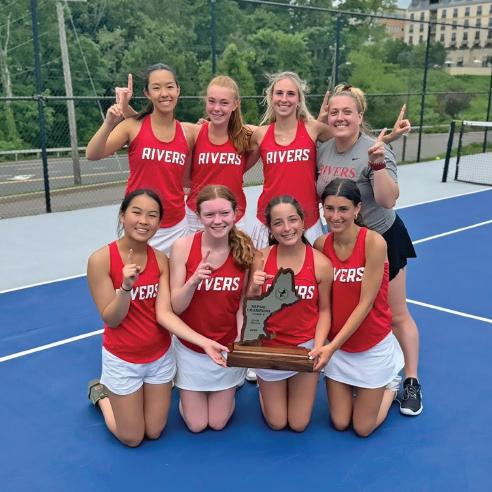

A large proportion of Rivers students aren’t just Red Wings in the classroom— they’re also student-athletes. Here is a snapshot of recent participation.
100% of Middle School students participate in athletics
5 number of Friday Night Lights games this fall
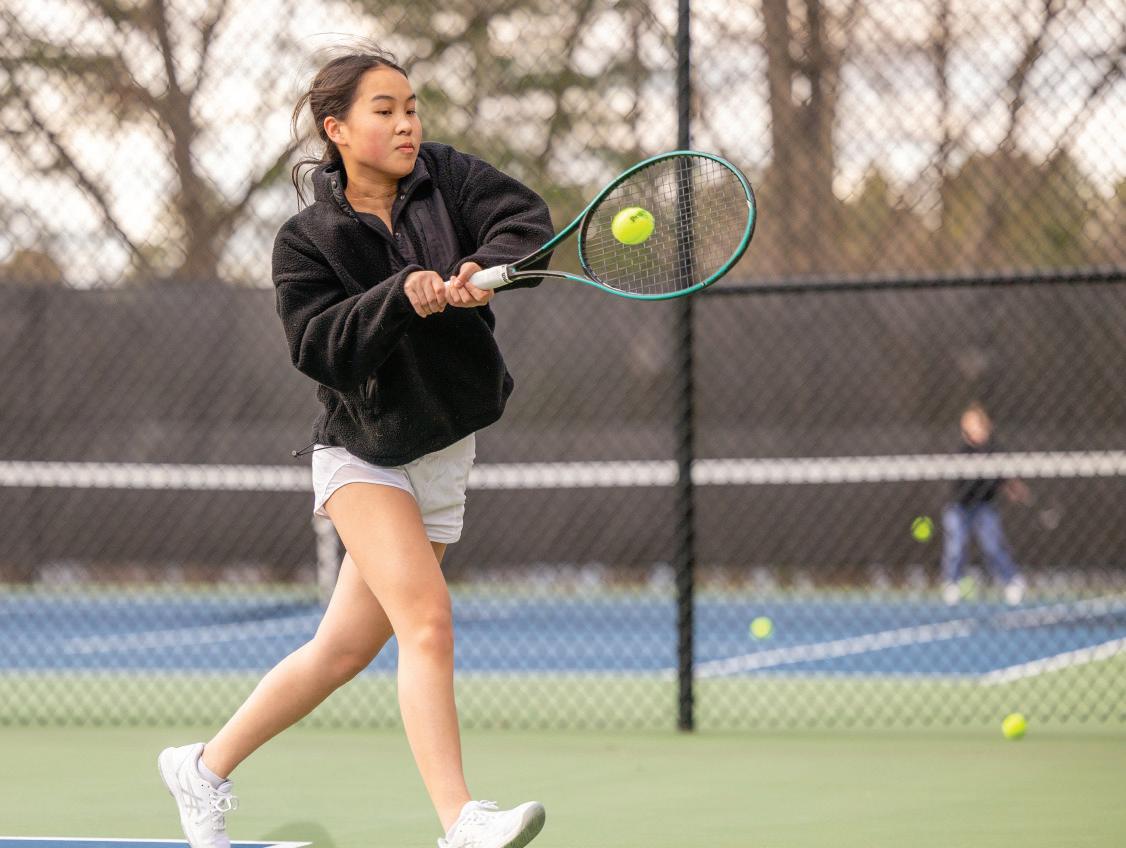
85 %
of Upper School students participate in athletics
10
students participated in national team camps this summer
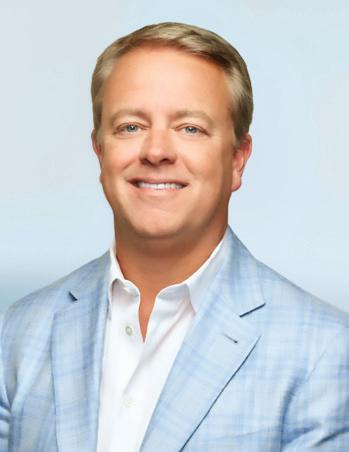


The Rivers School is delighted to welcome three new term trustees to the Board this year. Their experience, expertise, and enthusiasm make them vital additions to the team.
MARK H. CARTER P’30
Mark Carter serves on the finance committee and the investments subcommittee. Mark is a managing director in the health care group at TA Associates. He is actively involved in philanthropy, serving on the board of visitors at Vanderbilt University’s School of Engineering and the board of trustees at St. Sebastian’s School, in addition to a number of corporate boards. Mark holds a B.E. from Vanderbilt, magna cum laude, and an M.B.A. from Columbia Business School. Mark and his wife, Samantha, are the parents of Blair ’30, Brooks (St. Sebastian’s ’28), and Whit, a fifth grader at The Fessenden School.
Samia Kirmani serves on the governance and institutional equity committees. Samia is a principal at the Boston office of Jackson Lewis P.C., where she is a member of the board of directors, with expertise in advising employers in a range of industries on workplace law matters. She is a coleader of the firm’s corporate diversity counseling practice and its principal elevation committee, and she is part of its corporate governance and internal investigations practice group. Previously, Samia was the director of employee relations for Sycamore Networks, an associate at Sullivan & Worcester, and a law clerk to the justices of the Massachusetts Superior Court, and she has also served as a trustee at The Chestnut Hill School. Samia earned a B.A. in international relations, cum laude, from Tufts University, a J.D., cum laude, from Boston College Law School, and a certificate in diversity and inclusion from Cornell University. Samia and
her husband, Ameek Ponda, are the parents of Aliya ’27 and Sophia, a student at Dana Hall School.
Lucius Taylor serves on the facilities and finance committees. In 2007, he joined ArcLight, a private equity firm that focuses on energy infrastructure investments. Previously, Lucius was a vice president in the energy and natural resource group at FBR Capital Markets, where he focused on raising public and private capital for companies in the power and energy sectors. Lucius began his career as a geologist and project manager at CH2M HILL and is a licensed professional geologist. He earned a B.A. in geology from Colorado College, an M.S. in hydrogeology from the University of Nevada, and an M.B.A. from the Wharton School of Business at the University of Pennsylvania. Lucius and his wife, Meredith, are the parents of Pepper ’25 and Quinn ’27. R
WHEN OUR COMMUNITY comes together for a shared purpose, there’s no limit to what we can achieve—and support for The Rivers Fund is no exception. Gifts of all sizes provide necessary resources for classroom enhancements, financial aid, campus maintenance, and so much more to enrich the Rivers experience and strengthen our community.
Fiscal year 2025, which ended in June, was a record-breaking year for our annual fund. The numbers in the graphic at right tell the story.
1,556 DONORS TO THE RIVERS FUND
$437,273 RAISED FROM 640 DONORS ON GIVING DAY THE RIVERS FUND
“Gifts to Rivers, regardless of dollar amount, are a true testament to our community’s dedication and commitment to our school,” said Julia Wills, director of annual giving. “We’re so grateful for this outpouring of generosity.” R
356 FIRST-TIME DONORS PROFESSIONAL COMMUNITY PARTICIPATION
86%
$325,954 TOTAL GIVING IN FY25 TO RSC
ALUMNI PARTICIPATION
24%
FOR MORE INFORMATION ABOUT SUPPORTING THE RIVERS FUND, please contact Julia Wills at j.wills@rivers.org, or visit our website: rivers.org/giving. OVER $6 MILLION RAISED
995 DONORS GAVE IN 2+ CONSECUTIVE YEARS PARENT AND CAREGIVER PARTICIPATION
92%

BY JANE DORNBUSCH ILLUSTRATION BY JOHN W. TOMAC
ASK ANYONE WHO’S done it: Teaching is one of the hardest jobs around. It requires compassion and toughness, intellect and humor, energy and focus. Its practitioners must bring their A game to work every day. Expectations and stakes are sky-high, and the fast-paced days leave few moments to catch a breath or take a break.
Ask that same group why they do it, and most will provide a similar answer: It is something they feel called to do, and the rewards greatly outweigh the challenges. Those rewards have drawn more than a few Rivers alums to the field of education, as classroom teachers and as school administrators, and they report that the work has led to lives of purpose and meaning.
“You come to school, and you are on the entire day. It’s mentally and emotionally exhausting but fulfilling every day,” says Ainsley Mallows ’06, who leads a mixed classroom of students ages 3 to 6 at Lexington Montessori School in Lexington, MA. “It’s an inspiring thing, to see that energy. If that’s something you can connect with, why wouldn’t you want that for your job? I can’t imagine doing anything else.”
Many alums say their experience at Rivers set them on the path to teaching. They report that the supportive, nurturing, student-focused relationships they built with adults at Rivers, and the examples those adults set, provided a template for a meaningful life in education. Chris Post ’88, headmaster of the Boys’ Latin School of Maryland in Baltimore, reels off a long list (“too many to name”) of important Rivers mentors, and even now, nearly 40 years post-graduation, he’s quite clear about the extent of their influence: “If it wasn’t for my experience with my teachers and advisors at Rivers, I’m not sure I’d be doing what I’m doing today,” he says.
There’s no question that Rivers was a pivotal experience for these alumni educators, but some say they were interested in teaching even earlier. Ben Meiseles ’09, who has taught middle school math at the Synapse School in Menlo Park, CA, for seven years, got his first taste of classroom mentoring at Rivers. But, he says, “I could trace it back even further, to taking karate when I was 9 or 10 and teaching the little
kids lessons. It always gave me joy and satisfaction to help someone discover their abilities. And as the oldest of four children, it was kind of ingrained early on as a calling.”
“I always knew I wanted to be a teacher,” says Julia Holton ’18, a Latin teacher at Rumsey Hall School in Washington, CT. “I was always academically inclined, and my favorite part of school was connecting with teachers.” Babysitting for a young neighbor, she says, also opened her eyes to the appeal of teaching. “I loved explaining something to her and seeing her face light up,” Holton says.
A number of alums took a circuitous path back to the classroom. Meiseles, for example, initially headed in a very different direction after graduating from college with a degree in math. Bowing to pressure to pursue a more lucrative career, he got a job at a software firm. But, he says, “It was too far from what I loved.” After a “gap year” of travel, he landed at Synapse—the result of a decision to pursue a teaching role at the “weirdest, most wacky school in the area” (a fairly high bar in Silicon Valley, he says). “I wanted to learn the ropes at a progressive school,” says Meiseles.
Suzanne Burzillo Haley ’13 also took a somewhat roundabout route to what she jokingly calls the “family business”—her father is retired Rivers history teacher and archivist David Burzillo P’11, ’13, ’16, and her mother and
both grandmothers also taught. With an undergraduate degree in business administration, she spent about six months in finance before realizing it didn’t feel fulfilling to her.
“I worked in public accounting. I thought, ‘I’m just moving numbers around for people, and why am I doing this?’” says Burzillo Haley. But it was possible, she knew, to pivot within her chosen discipline. “In the field I was in, accounting, there are a lot of careers that can be transformative for people. I thought it would be cool to teach people to find careers that are meaningful.” She went back to school to pursue a Ph.D. with the goal of teaching at the college level; today, she is an assistant professor in the business school at San José State University in California.
Montessori teacher Mallows tried a few different avenues before teaching: She pondered landscape architecture, and she worked as an esthetician doing facials for a few years. At the point when she was “kind of over that,” a friend of her mother’s suggested teaching. “It was what I’d always intended to do, and I tell this to young people I meet who want to be teachers,” says Mallows. “Teaching is always going to be there. It’s more important to meet it at the moment you’re ready. If I’d gone into teaching right out of college, I wouldn’t have been ready. Now I’m ready and grounded.”

Over the years, several Rivers alums have come back to teach. Having absorbed the philosophy of Excellence with Humanity, they’re happy to have the chance to pass it along to succeeding generations.
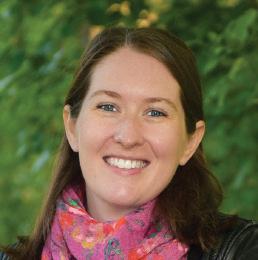
DREAM JOBS AREN’T always easy to find, so Julia Auster-Hogan ’06, who has taught French and drama at the Middle School since 2016, feels fortunate to have landed hers.
In high school, a summer job at a theater camp opened her eyes to the prospect of a teaching career. “Working with the kids kind of felt like my talent; it came naturally,” says Auster-Hogan.
In her first couple of classroom jobs, she says, “I was always trying to make other schools into Rivers. I would suggest activities like Red & White or programming that was like Rivers.” Soon, she was able to pursue a role at the actual Rivers: Upper School Assistant Dean of Students Susanna Donahue P’03, ’06, with whom she’d stayed in touch, alerted her about an opening for a French teacher.
At Rivers, Auster-Hogan cherishes the times students are so caught up in the day’s lessons that they’re surprised when class is over. She emphasizes that good teaching isn’t simply about having students acquire skills: “As a French teacher, I want students to learn the skills of using resources, not just how to conjugate verbs. As a drama teacher, I want them to learn how to collaborate and be on a team, not just how to cry on cue.”
Returning to Rivers as a teacher, she says, has had its odd moments; learning to see former teachers as coworkers can be an adjustment. But it’s one she’s been happy to make: “I love my colleagues. Being here is like coming home.”
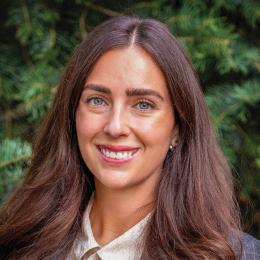
TEACHING AT RIVERS might seem like destiny for Upper School History Department member Stephanie Kay ’12: She’s a fourthgeneration alum whose great-grandfather Bob Strauss ’34 was in an early graduating class. She originally set her sights on a career in academia, but while earning her master’s degree in history, she had an epiphany of sorts: “I was working as a TA in grad school, leading a review session with 50 undergrads. At the end of the session, I thought, ‘I might be good at this.’”
After teaching at Meadowbrook and Beaver Country Day, Kay was delighted to return to Rivers in 2023. In addition to teaching U.S. and world history at the Upper School, she’s faculty advisor to TheRivers Edge , Rivers’ student newspaper—a full-circle experience, as she served as co-editor while she was a student.
“Not to sound trite,” says Kay, “but Rivers is a unique and special place. The concept of ExcellencewithHumanity , in my experience, is unique even among other private institutions. We’re helping students unlock their highest potential—and they tend to be happy while working toward that.”
That approach, she says, extends to the experience of faculty as well; she says she appreciates the “exceptional mentorship” she has received, along with the blend of autonomy and collaboration the school encourages in its faculty. The Rivers she knew as a student resonates with her experience as a Rivers teacher. “What I appreciate about Rivers, after learning more about my own philosophy,” she says, “is that it’s the right balance of traditional and creative.”
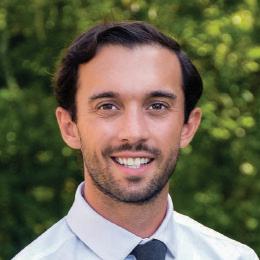
AS AN UNDERGRADUATE Matt Dias Costa ’13 wasn’t quite sure where his math major would take him after college. “I didn’t have a career or dream job in mind,” he says. “I just picked it because I loved math.” That love of the subject is something the Upper School math teacher very much hopes to instill in his students, and for Dias Costa, it’s also about paying it forward. “The math teachers I had at Rivers made it fun and interesting. I thought it would be a cool experience to be that point person for someone else,” he says.
He also knew he enjoyed working with kids. An accomplished soccer player who arrived at Rivers in eighth grade after making a connection with then-soccer coach and Rivers Director of Athletics Bob Pipe P’19, Dias Costa had enjoyed coaching and working at camps. Teaching seemed like a fit for his interests and background, so after college, he pursued a fellowship at a boarding school that allowed him to gain teaching experience and earn a master’s degree in education.
When an opening arose at Rivers in 2019, he jumped at the chance. “It was a great opportunity to come back to a special place that gave so much to me,” says Dias Costa. Like many teachers in his discipline, he sometimes encounters students who don’t see themselves as “math people.” With that in mind, he tries to provide the combination of strong support and high expectations he experienced at Rivers. “I believe everyone can be great at math,” he says.
I was interested in teaching starting at about age 16 or 17. I was so grateful for what educators gave me, and I wanted to be able to do that for other people.”
BRUNA LEE ARDILA ’13
For Bruna Lee Ardila ’13, a career in teaching was about giving back. She landed at Rivers in ninth grade through her participation in the Steppingstone program, which aims to improve college access for low-income and first-generation Boston students by preparing them for independent and exam schools. Once Steppingstone scholars are in high school, they have the opportunity to serve as teaching assistants (TAs) for younger students over the summer; that role, she says, gave her her first taste of teaching. “I was interested in teaching starting at about age 16 or 17,” Lee Ardila says. “I was so grateful for what educators gave me, and I wanted to be able to do that for other people. I always knew I wanted to give back to the community as a Steppingstone TA. Steppingstone made learning itself so fun.” Today, Lee Ardila teaches ethnic studies and American literature to ninth and tenth graders at the Head-Royce School in Oakland, CA.
Post, of Boys’ Latin School, says he chose teaching over an option that seemed much less appealing: “I remember preparing for the LSAT with a bunch of my college friends, who are all highly successful attorneys now,” he says. “And I’m thinking, ‘This is a fate worse than death.’” Although Rivers was behind him at that point, it was a Rivers mentor, John Gillespie P’88, who suggested that teaching might be the better direction and demonstrated that education was a viable career path.
Whether they came to teaching directly or indirectly, straight out of college or after a stint in a different field, Rivers alums who work in education express a deep commitment to the work and to their students.
That commitment shows up in various ways. These teachers understand the primacy of relationships in teaching. They’ve explored the theory and practice of pedagogy, and they strive to create an environment that fosters both learning and a love of learning.
“The culture of my class is to be a really close, tight-knit community,” says Lee Ardila. “I aim to create a community of learners, where it’s OK for all of us to make mistakes.”
Indeed, encouraging students to feel comfortable making
mistakes is a common theme. Stephanie Kay ’12, one of a few Rivers alums now teaching at the school (see sidebar, p. 29), says she aims to be a “warm demander” for her students. “I want to help students reach their highest potential, and I want to create a space where they feel comfortable making mistakes and asking questions.” Not coincidentally, she says, “that describes what a lot of my Rivers teachers were like and what I want to be: a solid, steady presence for my students.”
Meiseles’ philosophy in the classroom could have come straight from the Rivers playbook: “I want every kid to come out both feeling capable and actually being capable. Everyone is a math person. I want them to know that mistakes are beautiful, that questions are as important as answers, that math is about communicating. Those things are way more important than factoring quadratics.” Meiseles doesn’t just allow mistakes, he actively celebrates them. In his classroom, a bulletin board serves as a “museum of mathematical mistakes,” where students see and learn from one another’s learning journeys.
Burzillo Haley says that, above all, in creating a classroom culture and approach, she hopes to show her students that she cares about them—much as her teachers at Rivers made her feel cared for, supported, and seen. Many of her students, she says, are going to school on top of working full time, so she builds in flexibility to demonstrate that she understands the challenges they may face.
Rivers alums who’ve transitioned from teaching to administrative roles say the shift has allowed them to view education and pedagogy through an ever-widening lens. Post, who pursued teaching knowing he would one day move into administration, puts it succinctly: “As much as classroom work was meaningful, being administrator meant shaping the mission.”
Veteran teacher Sara Masucci ’94 took on the role of director of ninth and tenth grades at Chapel Hill-Chauncy Hall in Waltham, MA, in 2022. “The skills of a teacher are necessary to be an administrator,” says Masucci, who still teaches one section of history. “But I’ve really enjoyed seeing more and more of how other parts of the school function than you see as a classroom teacher.” She says it’s easy for administrators to cloister themselves in their offices, so she makes an effort to ensure that she’s still part

of the community: “I’m in almost every building every day.” She appreciates that, as an administrator, she has the opportunity to look more broadly at philosophy and mission. “We don’t get to think for students, and we don’t tell them what they should think,” she says. “We hopefully provide them with a space to figure out how to do that complicated thinking—to say things they’re not sure of, have hard conversations, to refine their thinking.”
Perhaps it’s no coincidence that these educators, in many cases, sound like the Rivers faculty members who provided early examples of a life in teaching. Meiseles says that for him, becoming a teacher literally started at Rivers, with a senior project that laid the foundation for the math teaching assistant program, which is still in place.
Holton recalls that she hadn’t thought of herself as a math student until she took precalculus with late Rivers faculty member Dan McCartney P’08, ’15. “He changed the way I thought about math, and the way I thought about myself and my ability to do hard things. I went on to take AP Calculus, which I never dreamed I would do,” she says. A brief teaching stint at Rivers during the 2022–23 school year also
influenced her: “I interned with and was inspired by [Middle School Latin teacher] Cathy Favreau P’22 for that year. She is the reason I chose teaching middle school rather than high school.”
Masucci remembers former faculty member Len Thomsen patiently meeting with her three times a week to get her through algebra—an effort she didn’t truly appreciate at the time (“I’m sure my eyes were rolling”) but does in retrospect. “At Rivers I felt incredibly known and seen,” she says, “and a piece of what I do today is built on trying to make kids feel the way I felt.”
These educators are, of course, contending with challenges that didn’t exist during their Rivers years. Like all teachers, they’re grappling with the impacts of smartphones, social media, COVID, and AI, just to name a few.
But by its very nature, the field is always evolving—while remaining fundamentally unchanged at its core. Mallows says that at her school’s closing meeting of the year in June, she looked around at her colleagues and was struck anew by the importance of the work: “I’m surrounded by all these people who every day are coming into our school endeavoring to make humans better. To have all these people come together every day with that goal as their purpose—that’s pretty remarkable.” R
OUR THREE STRATEGIC PRIORITIES
Pursue Excellence through Innovation
Cultivate an Ecosystem of Connection, Well-Being, and Belonging Focus on Lives of Impact and Purpose

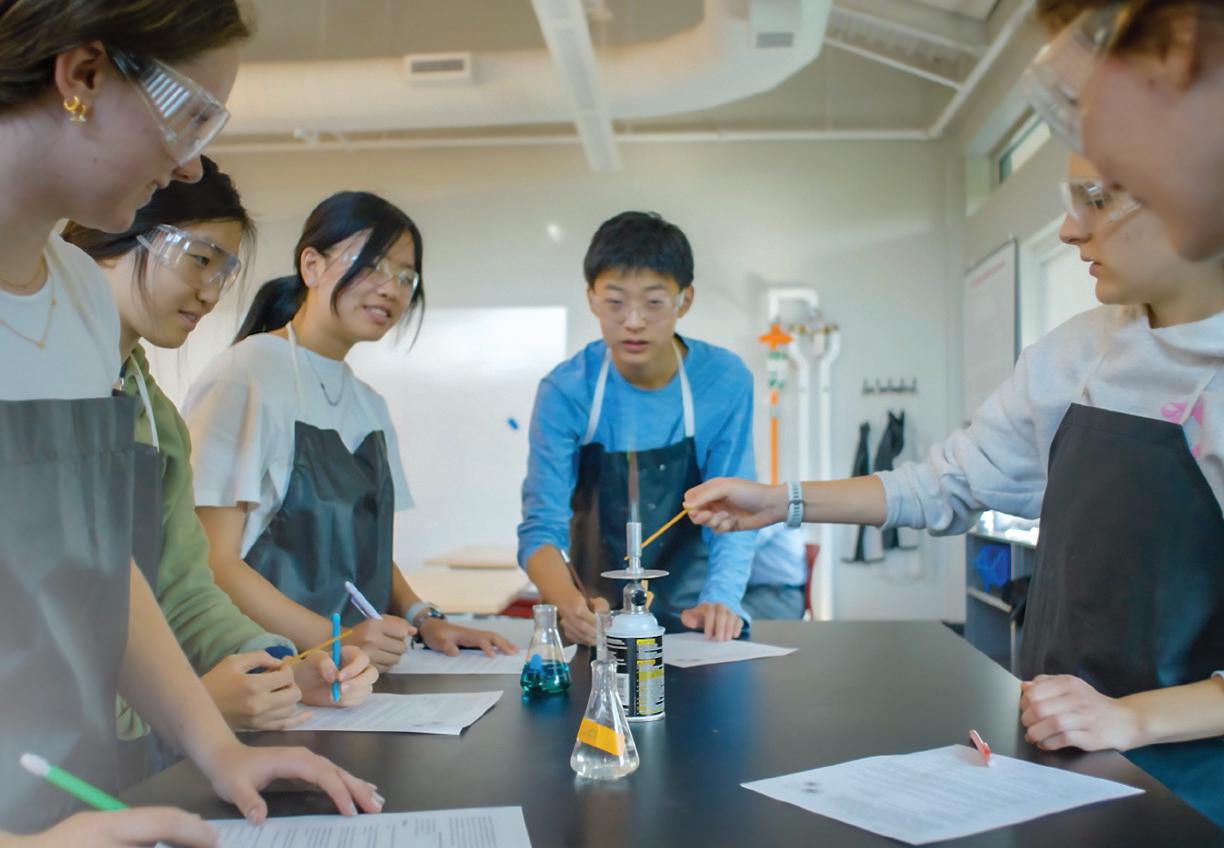
Rivers Launches Strategic Plan, Mission, Core Values
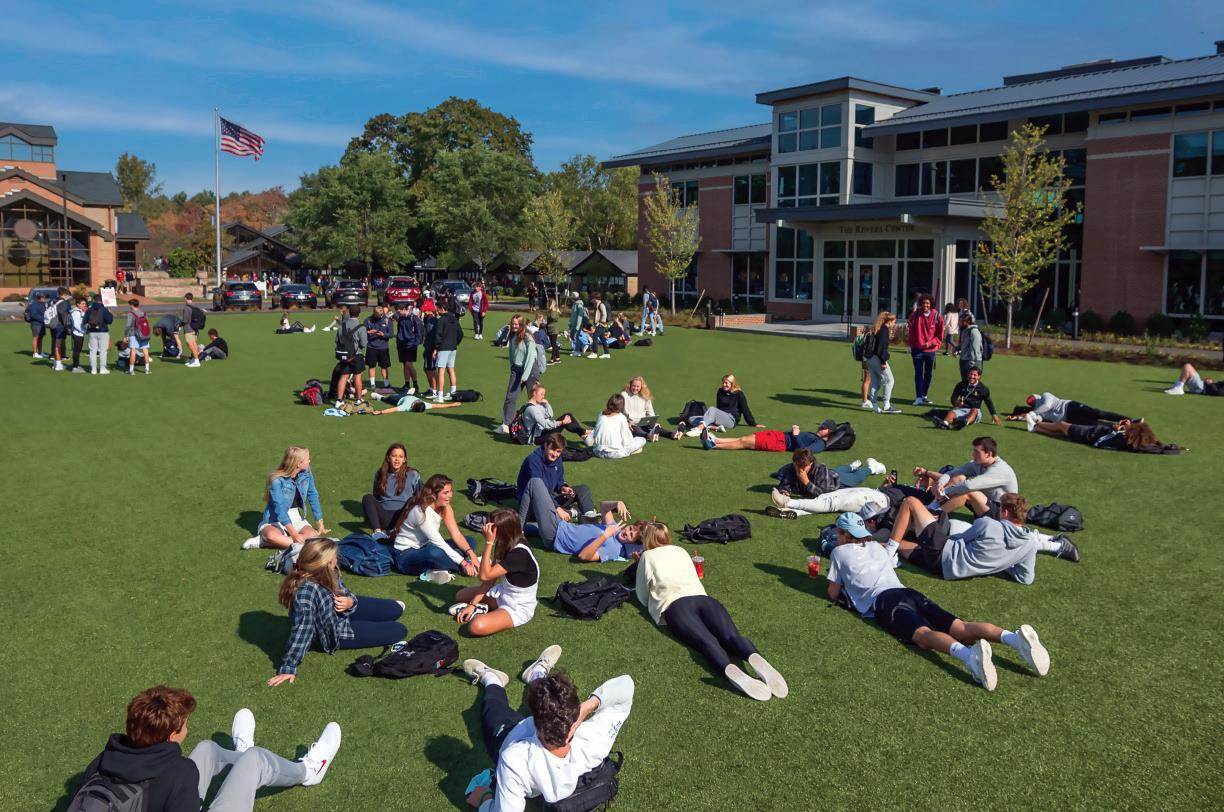
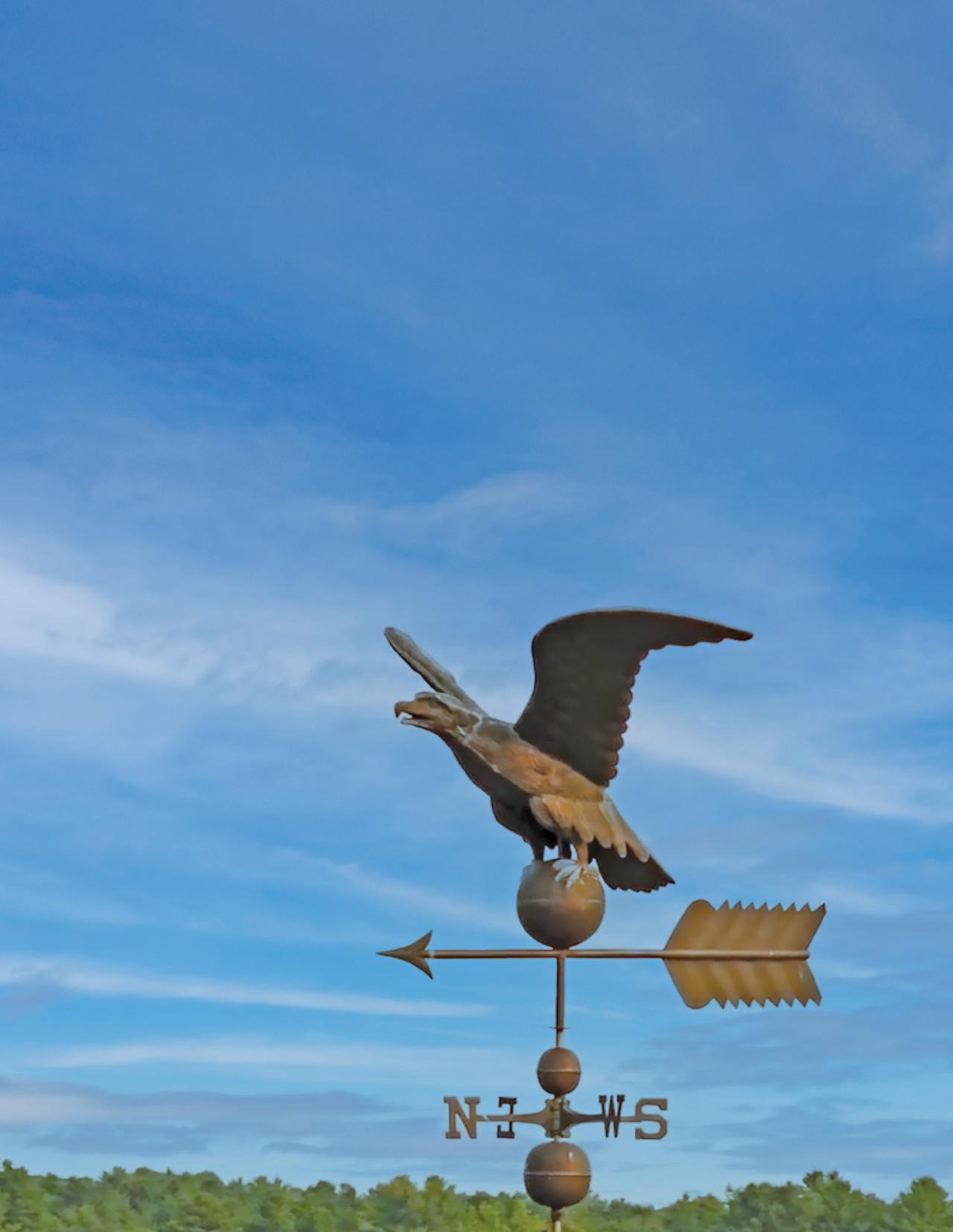
Rivers inspires every student to pursue excellence, thrive in a community of connection and belonging, and create their own path to a life of impact and purpose.

Guided by our philosophy of Excellence with Humanity, we value:
We are committed to aligning our actions with our values in the continuing pursuit of courage, honesty, and truth.
We embrace challenges and make space for discomfort as we build resilience and support individual and collective growth.
We seek to understand and connect with one another to foster a community of mutual respect and care.
We prioritize learning that is grounded in our natural sense of wonder and shaped by exploring complex questions in an ongoing process of discovery.
We delight in engaging with our work and with each other, celebrating our passions and the fullest expression of ourselves.
Approved by the Board of Trustees in June 2025, Rivers’ new strategic plan will serve as a road map for the school’s future. It is the culmination of an intensive twoyear process that began with the school’s re-accreditation process with the Association of Independent Schools in New England (AISNE) and included a market research study, a strategic design summit, and input from the community throughout the process. A new strategic plan wasn’t the only outcome of that work. The school also has a new mission statement and an expanded set of core values, approved by the Board at the same June meeting. We sat down with Head of School Ryan S. Dahlem to talk about the process, what he’s most excited about, and how the school’s past has informed its future.
Q: What can the Rivers community, particularly our students, most look forward to with this new school road map?
Ryan S. Dahlem: We’ve got incredible momentum going into this new strategic plan, and we will build on that momentum to create new opportunities informed by student needs. We expanded well-being resources and are in the process of revising our school schedule based on student feedback to improve the daily cadence—that’s an early strategic initiative that we will roll out in the 2026–27 school year. We’re also looking toward intentional growth of our endowment to support financial aid and to strengthen the school’s financial position.
Another area of focus is this notion of “One Rivers,” which plays out in many different ways. We want to think about the Rivers experience as a cohesive seven-year program, really focusing on the Grade 9 experience and building that bridge
between the Middle School and Upper School. Finally, we’re envisioning a new hub on campus—a center for community, gathering, and the performing arts. It’s all very exciting.
Q: It’s unusual for a school to develop a new mission statement in the same year as it approves a new strategic plan. How did Rivers make that happen?
RSD: The AISNE accreditation process engaged the entire community and served as the initial research for developing the strategic plan, and through that process, we identified that we wanted to revisit the mission statement and core values.
It was ambitious to develop all three at the same time—a new strategic plan, new mission, and new core values—while we were still finishing the actual accreditation process. But the fact that we were engaging them at the same time helped us think aspirationally about the mission, while developing
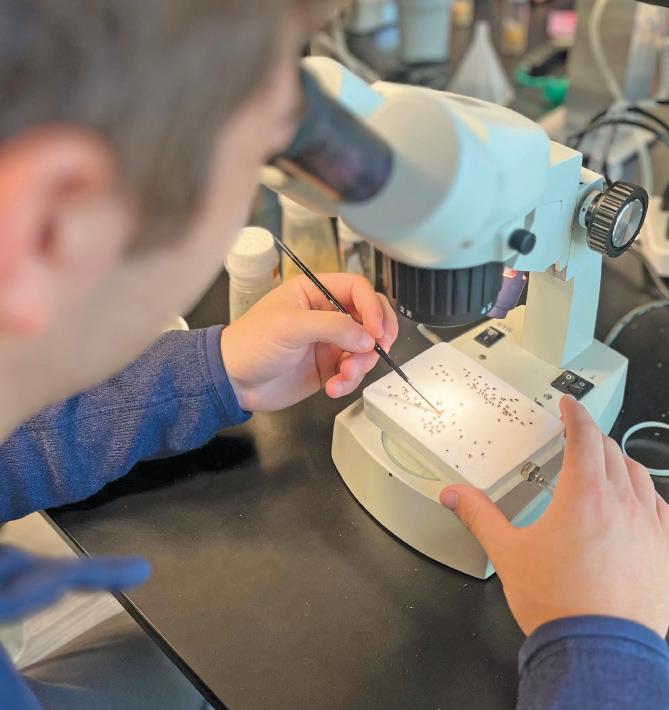

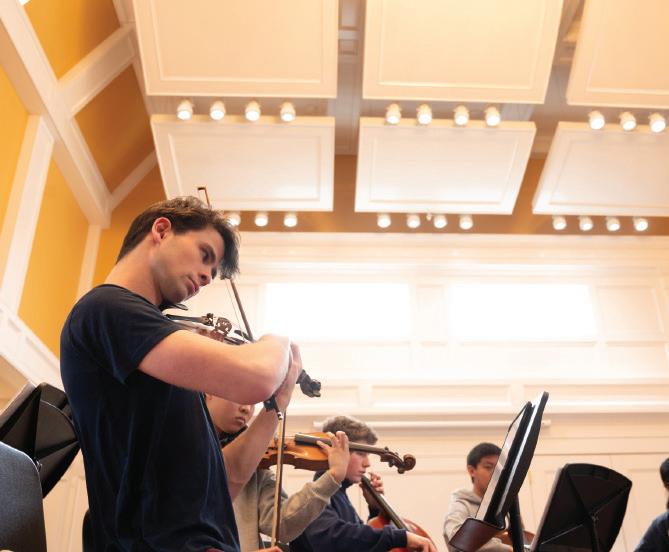
the strategic plan for how that mission gets lived out, creating resonance between the two.
Q: There used to be two core values— now there are five. What was the reasoning behind that expansion?
RSD: As we asked community members to reflect on our existing core values—integrity and perseverance—as part of this process, a common theme arose that it felt like an incomplete set. The new core values of empathy, curiosity, and joy serve as additional guideposts for how we live out our work every day, and are also characteristics that we hope our students internalize.
Q: What themes carry through from previous plans to the new plan?
RSD: We looked back at the past three strategic plans. Certainly, the philosophy of Excellence with Humanity is one throughline. The 2015 plan really spoke to academic excellence, and we’re still focused on that—we’re also taking a longer view on community engagement and purpose. And then, there’s campus development. The past nine years under the previous strategic plan really pushed the campus forward, and we’re going to do that again with this plan.
Q: What speaks to you most about the school’s new mission statement?
RSD: I’m really excited that it’s one sentence— we can recite it. I love that it’s an articulation of ExcellencewithHumanity . You can see the focus on excellence, and you can see the focus on humanity in the present with what we’re doing with our students, but also in terms of our future aspirations for their impact on the world. R
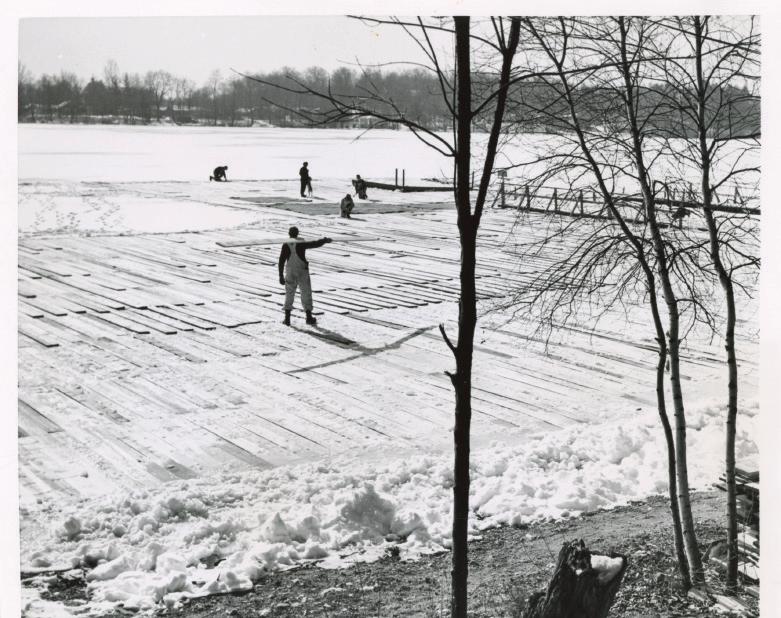
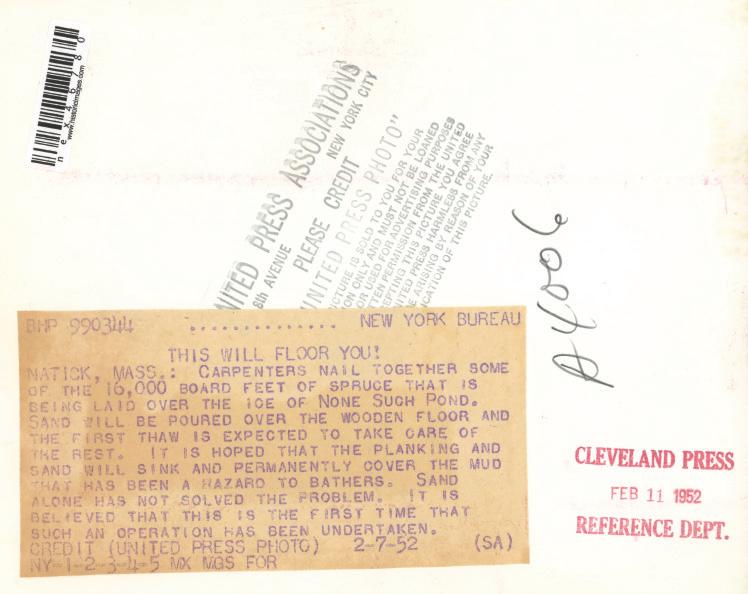
THIS 1952 POSTCARD predates Rivers’ presence on the Weston campus and the area abutting Nonesuch Pond. The photo, taken from the area which is now Camp Nonesuch, shows an attempt to rein in the muddy waters by laying planks over the frozen pond.
DO YOU HAVE ANY MEMORIES OF NONESUCH POND AND CAMP NONESUCH?
Let us know by sending a note to alumni@rivers.org!
Steve Cline ’66 writes that, in addition to being classmates at Rivers, he and Peter Foss ’66 were also college classmates, both graduating from Colby College in 1970. Steven shared a photo of himself and Peter at their 55th Colby reunion in June. “I think we look pretty good for a couple of ‘older gentlemen’! I hope to send another photo when Peter and I attend our 60th Colby reunion,” says Steve. He added that it’s hard for him and Peter to visit Rivers, since they live in Maryland and Maine, respectively.
Jim Schuknecht ’69 writes, “My wife, Barb, and I have been retired and living in the foothills of Colorado for 11 years now. We worked our careers and raised our two boys in the Seattle area, where I wore many hats in advertising and design. We have three grandchildren who get individual RV trips with Gram and Pop every summer. (And I love to hear from old classmates!)”
Mark Klett ’71 published his debut novel, Convergence of Evil: A 9/11 Story, in September, and it is available on Amazon. He describes the novel as a fiction thriller that blends history, imagination, and the complexities of global intelligence. Mark keeps connected to Rivers, including establishing the Klett Internship Fund in 2021, which offers eligible students financial support as they pursue internships. He visited Annapolis in late October to celebrate his 50th reunion at the Naval Academy.
Bob Tremblay ’74 finished writing his first novel, a children’s book titled Toby and the Gargoyle. He writes, “I would sell my soul for a publisher or an agent.”
Kevin Hurley ’85 attended Reunion in May and writes, “Glad to attend an alumni function!” He also noted that he met a member of the Class of 1965. “Great to hear his stories,” Kevin says. Read more about Reunion, and view a photo gallery on page 38.

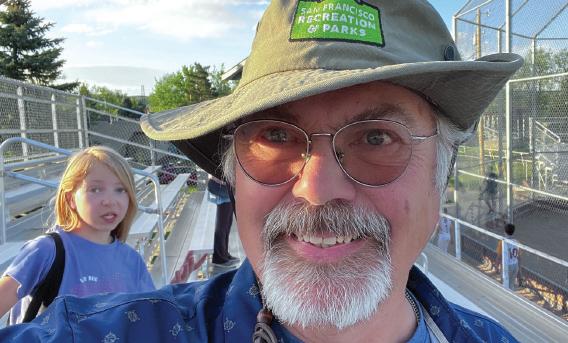
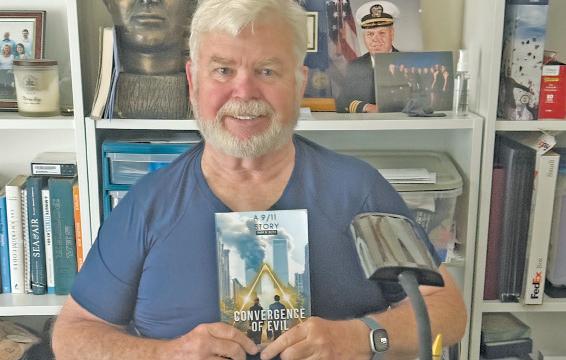
Rivers Celebrates Reunion



THE RIVERS SCHOOL welcomed alumni back to campus for Reunion in May to reconnect, reminisce, and celebrate their reunion milestones.
The day began with a luncheon for the 50th to 65th reunion classes, followed by an opportunity to learn from Rivers faculty and students. History Department Chair and Jarzavek Teaching Chair Ben Leeming P’17, ’19, ’21, ’23 gave a lecture on how he and his students use AI language models to assist in historical research. (Read more about Leeming’s work on page 17.) Alums also had the opportunity to learn from students when rising seniors in the McCartney Scholars Program presented a lesson on game theory. In the afternoon, guests gathered in The Revers Center for the annual
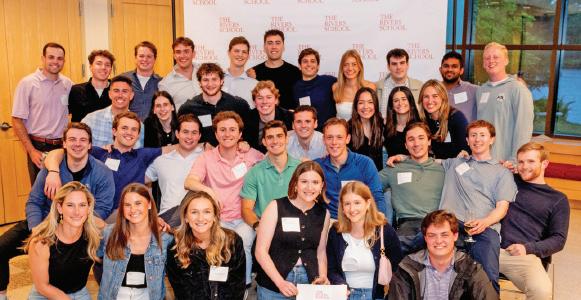
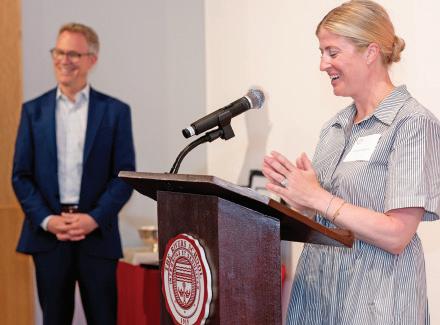
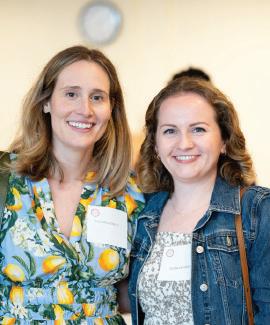
alumni awards ceremony. This year, the Alumni Excellence Award went to Jordan Kreidberg ’75, the Young Alumni Achievement Award went to Tayra Meléndez ’12, and The Rivers Cup went to Alexandra Krotinger ’04, president of the Alumni Council.
New this year was the Rivers Alumni Participation Cup, an award given to the graduating class with the highest participation rate in The Rivers Fund by May 31; this year, that award went to the Class of 1965, with 89% class participation.
After the awards ceremony, the attendees moved into Kraft Dining Hall for dinner and socializing. Alums pored over their class yearbooks and connected with each other and their former teachers and coaches, and
Boston singer-songwriter Billy Dodge Moody ’05 provided live entertainment.
“It was wonderful to welcome back Rivers alumni from such a wide range of classes,” said Director of Family and Alumni Engagement Janet McKeeney.
“From 1960 to 2020, it is clear Rivers alums appreciate the education they received, the relationships they formed, and the strong community bond they share.” R
THE CODE
TO VIEW A GALLERY OF REUNION PHOTOS

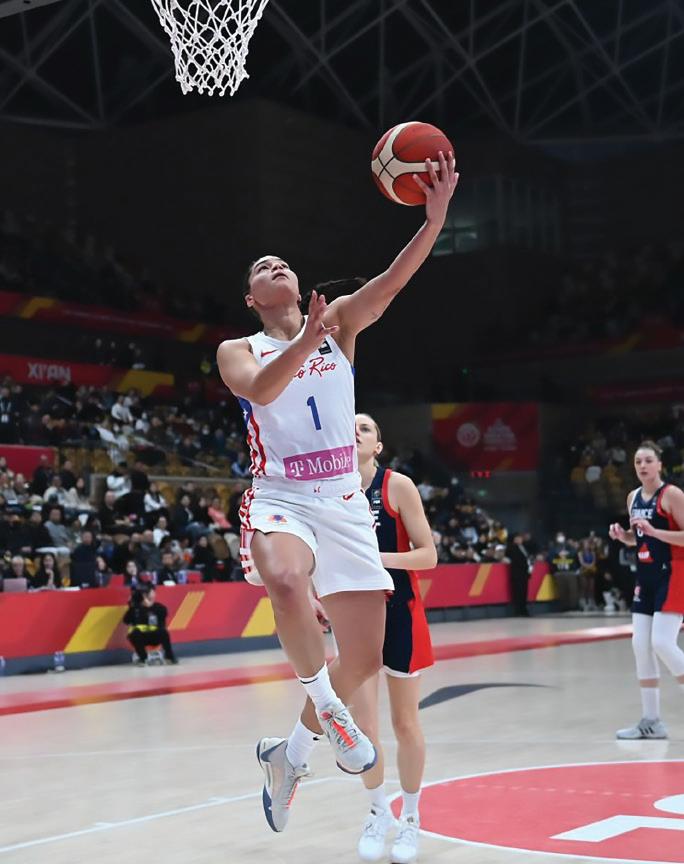
THE YOUNG ALUMNI Achievement Award is given to a recent graduate who models the spirit and values of The Rivers School, demonstrating leadership, excellence, and service to others. This year’s recipient was Tayra Meléndez ’12.
At Rivers, Meléndez was described as a “genuine citizen of the school community, a talented artist, and one of the most skilled basketball players
in Rivers’ history.” As a psychology major at the University of Rhode Island (URI), Meléndez captained the basketball team and became one of only two players in school history to record 1,000 points, 600 rebounds, and 150 blocks. Her excellence extended beyond college as she represented Puerto Rico in two Olympic Games— Tokyo 2020 and Paris 2024. She played professionally in Puerto Rico, Ecuador,
and Croatia, winning two national league championships and being named Finals MVP in 2021.
Off the court, Meléndez has been a devoted coach and mentor—beginning as a coach at Rivers and extending to the Amateur Athletic Union circuit and collegiate basketball programs. She was appointed director of basketball operations at URI, then joined the Saint Francis University Red Flash, assisting with player development, scouting opponents, and recruiting.
Said Head of School Ryan S. Dahlem, “Her journey is a model of what it means to live with determination, resilience, and passion. [Meléndez] is inspiring the next generation of scholar-athletes and breaking boundaries for women in sport.”
Meléndez could not accept her award in person at Reunion due to basketball commitments in Amsterdam, but she expressed her gratitude in writing. “Rivers played a vital role in my life, and I am proud to say I am an alum. Having to wake up every morning at 5:00 a.m., take a public bus, public train, and school bus just to make it to school on time showed me responsibility, dedication, and commitment,” she said. “I will forever be indebted to Rivers for the opportunities it has given me, for the people I met and who still remain in my life, and for the basketball player and, importantly, the woman I have become today—a woman who set goals for herself that seemed impossible and then reached them with integrity and perseverance. That is something I learned at Rivers.” R
Embracing the Power of Connection

ALEXANDRA KROTINGER ’04 describes herself as a “connector.” “I like to understand people, what drives them, and what fuels them. It’s one of my favorite parts of leading people and teams,” she says. “I care deeply for people in my life, and I know the value of the human connection.”
Krotinger embraced that power of connection as a student at Rivers, and she continues to embrace it in giving back to the school that she says
has given her so much. Krotinger has served in a variety of volunteer roles and is the current president of the Alumni Council. At Reunion in May, she was awarded The Rivers Cup, an annual award that recognizes an alum who has shown extraordinary dedication to Rivers.
“Rivers satiated in me an appetite for learning,” Krotinger says. She recalls with gratitude the support she received from Rivers teachers, who
encouraged her curiosity and growth. “Rivers teachers genuinely want you to be successful and be creative,” she says.
“There’s an art and a science to learning that is literal and very practical. I liked that anything we learned in a book was brought to life,” Krotinger adds. “It was teaching to make you excited about learning and the world you will be a part of.”
Krotinger cites key takeaways from Rivers that have supported her professional growth: “Always being curious, asking why things are the way they are, [and] creating solutions.” She has held leadership roles in the investment sector, at HubSpot, and, most recently, at OneTrust, where she is director of learning and talent development.
Throughout her life, Krotinger has remained connected to Rivers. Before joining the council, she served as a class agent. She established the Young Alumni Achievement Award to engage younger alumni by recognizing and celebrating early career achievements. She also helped revamp the “Life After Winter Street” event for graduating seniors. Now known as “Rivers Connect,” the event focuses on students’ next horizon: college.
Lisa Raftery ’93, among the first female graduates of Rivers, served as an important mentor in welcoming Krotinger to the Alumni Council. Krotinger describes Raftery as a “quiet leader with a commanding presence.” She adds, “She saw the same energy she has for Rivers in me.” In turn, Krotinger’s leadership and dedication to Rivers sets an example for the next Rivers generation to follow. R
Michael Mathaisel ’86 writes, “After a dozen years working as a software engineer at Walt Disney World Resort, I earned my law degree in 2009 and began practicing patent law in Massachusetts and New Hampshire. In 2020, I also began teaching at UNH Franklin Pierce School of Law, and in September 2025, I was admitted to the New York State bar.”
David Marshall ’90 recently earned his doctorate in business administration from Temple University. He shared that his dissertation, “Decision Frameworks and Synergism in Investment Manager Selection,” will be published through ProQuest. He describes the subject matter as presenting “foundational research in the field of investment manager evaluation.”
Naomi Wernick-Pfaffmann ’93 reached out in response to our call for alum educators, sharing that she has been a professor at UMass Lowell since 2010. “I am a teaching professor in the biological sciences department. I teach intro courses for bio majors and also a grad level course about biology education. I conduct research in the area of biology education,” she says. Naomi adds that she and her family recently moved back into their house in Waltham,MA, after a big renovation. “Our 3.5-year-old is excited to have a new and improved house with more space to run around and play,” she says.
Sara Masucci ’94, director of ninth and tenth grades at Chapel Hill-Chauncy Hall School, shares, “I still use some of the books I had as a student at Rivers ( The Odyssey, Shakespeare’s plays), and I love seeing the notes I wrote in them.” (Read more about Sara in “Class Acts” on page 26.) Doesanyoneelsestillhavebooksfrom classesatRivers?Letusknow!
Amy Lisbon Branton ’99 also shared her experience as an educator, writing, “I have been a teacher at Charles River School for the last 17 years, starting as a first grade teacher and then becoming the literacy specialist. In my current role, I work with small groups in grades K–4 and provide one-on-one Orton-Gillingham support in grades K–6. I became an associate level
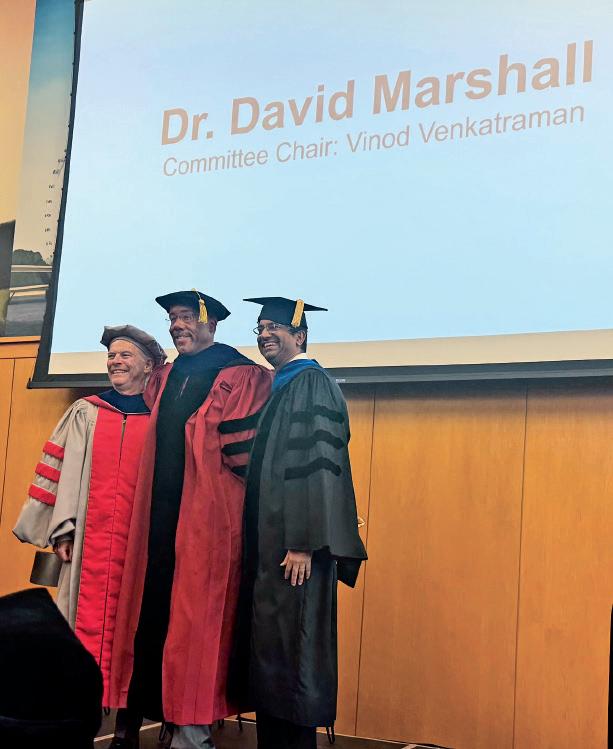
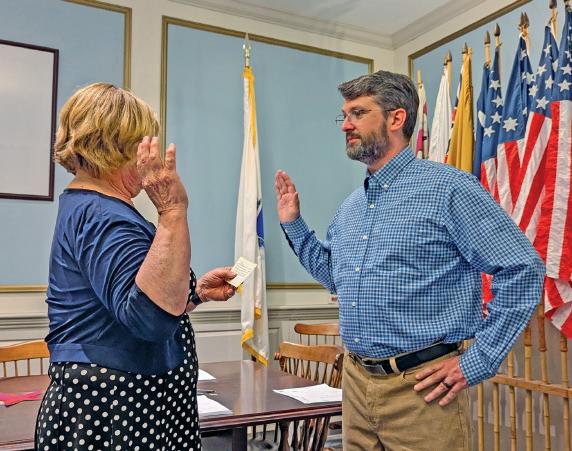

JORDAN (CROSS) CUNNINGHAM ’15 shared a photo of her family: (LEFT TO RIGHT) dog, Finn, daughter, Mabel, and son, Benjamin.
Orton-Gillingham practitioner in 2007 and spent several years as a language tutor at Summer@Carroll at the Carroll School. In 2022, I completed the course of study to become an Orton-Gillingham fellow. In addition to my work at Charles River School, I train teachers in the OrtonGillingham approach.”
David Carroll ’01 was elected to the library board of trustees for Stow, MA, last May. “After the presidential election in November [2024], it was clear that I couldn’t make a major impact on the national level, but that we can all make a difference in our local area,” he writes. “I encourage other alumni to run for local office and to volunteer in your town/city.”
Manya Steinfeld ’08 wrote in from Norway in response to our call for alum educators: “I was a collegiate assistant field hockey coach at Keystone and Washington and Jefferson for three years. I then transitioned to Loomis Chaffee, where I was the head varsity field hockey coach, girls’ JV lacrosse assistant coach, and strength training assistant coach. I also
taught psychology and ethics. In 2019, I moved to Germany, where I taught the IB [International Baccalaureate] program in the humanities, specializing in psychology and history, from grades 6 to 12. I was also an advisor and head of the humanities department. Just recently, I moved to Norway, and I am looking forward to the next steps.”
Jordan (Cross) Cunningham ’15 writes, “Added a new addition to the fam last fall—Mabel Drew Cunningham. Can’t believe she’s turning 1!” Jordan says her son, Benjamin, and the family dog, Finn, “love their little sis so much!”
Patrick Mahoney ’19 is pursuing an M.B.A. at the University of Colorado Boulder’s Leeds School of Business, but he also wrote in to share his experience as an educator. For the past two years, he worked as a moderate needs special education teacher at a high school in Colorado through Teach for America. He also coached football and lacrosse, his two primary sports at Rivers. In his second year of teaching, he was made chair
of the special education department. “Teaching and coaching has been a great platform in my early career to build my leadership as well as managerial skills,” Patrick says. He also describes it as an eye-opening experience, witnessing the challenges of the education system. “It is definitely bittersweet starting the school year as a student instead of a teacher, but I’m sure Rivers will continue to produce high-quality change-makers who might choose to do Teach for America as well,” he concludes.
Abi Walsh ’20 writes, “Hi, Class of 2020! Miss you all! Sending my best—Red Wings for life!”
Kara Johnson ’22 is in her senior year at Tulane University and plans to attend law school in the future. Over the summer, she worked as a family and immigration law intern at the Massachusetts Law Reform Institute in Boston. She adds, “I still keep in touch with many of my Rivers friends and am so thankful for everything Rivers did to set me up for the future!”
ALUMNI EXCELLENCE AWARD
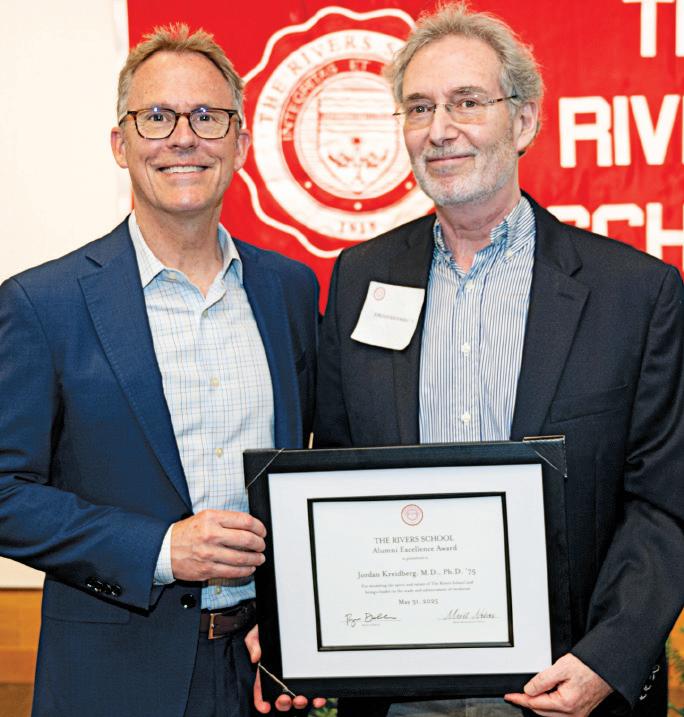
JORDAN KREIDBERG ’75, this year’s recipient of the Alumni Excellence Award, has dedicated his life to scientific research, specifically the molecular biology of kidney disease.
A physician-scientist and a leader in kidney research in Boston, Kreidberg says his passion for biology and research came from an experience in his sophomore year at Rivers. Then-science teacher Steve Smith’s advanced biology class, which was almost entirely lab-based, was “one of the sparks that really got me interested in scientific research,” says Kreidberg. Kreidberg went on to spend high
school summers doing research in labs at Harvard and MIT, later attending college at MIT and conducting research in immunology. He then pursued a combined M.D./Ph.D. from Johns Hopkins University School of Medicine, where he studied molecular biology and genetics and became interested in developmental biology. He returned to the Boston area to continue that work, first with a residency in pediatrics at Boston Children’s Hospital, and later as a postdoc at the Whitehead Institute, where he studied the biology of the kidney. That subject became the focus
of his own lab, which he launched at Boston Children’s Hospital in 1994. For many years, Kreidberg has also taught genetics and developmental biology at Harvard Medical School.
Now co-director of the KreidbergSchumacher Lab at Beth Israel Deaconess Hospital Medical Center, Kreidberg and his team investigate how kidney cells develop, contributing to research that combats kidney disease.
“Kidney disease doesn’t have the publicity that cancer or heart disease has, but people who suffer from this are very sick,” says Kreidberg. He explains that while there are treatments, such as dialysis and kidney transplants, these greatly affect the quality of life of the patient and the patient’s family. “It can be a very devastating condition,” he says.
“We hope our research will help us understand more about how kidneys are damaged, with the ultimate goal to prevent that damage, or to prevent patients from needing dialysis or transplants,” he continues.
In May, Kreidberg accepted his award while attending his 50th Rivers Reunion, where he acknowledged the continued importance of Rivers in his life. Beyond his career in medicine, he credits Rivers with igniting his love of fine arts and photography, recalling a darkroom class at Rivers, participating in the photography club, and contributing photos to The Nonesuch and The Current. “Many of the interests important to me today developed here,” he says. R
July 20, 1956–May 12, 2025
JIM MCNALLY P’15, ’18, director of athletics from 1996 to 2016, passed away peacefully on May 12, surrounded by family.
McNally believed in the power of sports to build character, leadership, and community. He launched several key programs at Rivers and was instrumental in the hiring of talented coaches. Under his direction, Rivers’ teams won seven Independent School League (ISL) championships and 29 New England titles. In recognition of his service to Rivers, he was awarded the Rivers School Athletic Department Distinguished Service Award in 2016.
Beyond Rivers, McNally’s dedication to youth sports and interscholastic competition earned him widespread respect. He held various roles within the ISL and NEPSAC, including president. In 2008, NEPSAC presented him with an award for his outstanding dedication to the council, and he received the NEPSAC Distinguished Service Award in 2018 for his extraordinary leadership. For those fortunate enough to have worked with him, played for him, or simply known him, McNally will be remembered as a mentor, a coach, and a friend. His legacy lives on in the thriving athletics program he helped create—and in the lives of the student-athletes he believed in so passionately.
JAMES G. SCHAADT ’42*, December 15, 2011
JOHN W. SPELLMAN JR. ’43*, August 9, 2021
HARWOOD ELLIS JR. ’56, March 18, 2025
*Notification of passing received in 2025
Louis John Gillespie III P’88
May 16, 1940–November 12, 2024
JOHN GILLESPIE P’88 passed away on November 12, 2024, after a courageous battle with dementia. Gillespie was a dedicated teacher at Rivers for 26 years before retiring in 1999, and he was also a former Camp Nonesuch director. Gillespie left a lasting impact as a teacher in the sciences, teaching his passion, geology, as well as a popular elective in cultural anthropology, for which he was awarded the F. Ervin Prince Teaching Chair in 1995. He also served as a coach for football, soccer, and cross country over the years. For his service to the Athletic Department and support of students, he received the Rivers School Athletic Department Distinguished Service Award in 1999. Gillespie’s love for the outdoors and adventures led him to found the Rivers Outing Club, which took students on excursions to explore the wonders of nature, with ski trips to Quebec, the Alps in Austria and Switzerland, the New York State Adirondack Park, and more. Gillespie himself was an Adirondack ’46er, meaning that he had climbed the 46 highest peaks in the Adirondacks, all over 4,000 feet. Gillespie is survived by his wife of 60 years, Susan; his son, Mark Gillespie-Dipinto ’88; and two grandchildren.
PAUL A. KEANY ’63*, February 28, 2024
JOHN E. LAFFERTY ’66, March 16, 2025
HENRY A. MALKASIAN JR. ’81, March 25, 2025
AFTER A REWARDING career, it’s understandable to find yourself reflecting on the past—what influences got you to where you are? What gave your work meaning? For one alumnus, a member of the Nonesuch Society who has chosen to remain anonymous, it is all tied back to lessons learned at Rivers.
Recently retired from a successful law career, this alumnus served 34 years as general counsel for a company in the Midwest, where he earned the respect of his colleagues and company leadership.
Early on in that role, when the company made its initial public offering, this alumnus recalls having to quickly become an expert in securities, an area of expertise that was new to him at the time. This, he says, was akin to embarking on a new legal career and required many months of hard study. He credits Rivers with instilling in him the intellectual curiosity to meet that challenge and learn on the job. In particular, he says, former teacher and mentor Jack Jarzavek gave him “the self-confidence to learn and want to learn.”
“Constantly learning makes me happy—that’s Rivers’ gift to me,” he says. That gift has fueled a lifelong love of reading history.
In his professional role, this alumnus made ethical decisions on behalf of the company. “People would ask me how I make these decisions,” he says. His answer? “Many seemingly complex and difficult questions are really not that difficult: It is a question of right and wrong, and most people know what the wrong choice is; they just choose to take the easy route. I would say that my parents instilled in me this fundamental moral code, and Rivers reinforced it on a daily basis. Rivers always held you accountable for your actions.”
Staying connected to Rivers motivates this alumnus to give back. “Reading the Riparian, I’m consistently amazed at the quality of the students’ accomplishments in the liberal arts,” he says. “It’s so important to have that well-rounded education.”

THE NONESUCH SOCIETY was established to recognize the generosity of alumni, parents and caregivers, and friends who have made provisions for Rivers in their estate plans. Its members have each made a commitment to ensure the continuation of excellence in teaching that is so critical to the education of future generations.
When you include Rivers in your will, you play a significant role in the future generations of Rivers students and teaching faculty members. At the same time, by taking advantage of tax laws that encourage philanthropy, making a bequest to Rivers can significantly reduce estate-tax burdens.
For more information about gifts to Rivers, such as bequests, living trusts, and gifts of life insurance or retirement plans, or if you would like more information about the Nonesuch Society, please contact Meret Nahas, chief advancement officer, at m.nahas@rivers.org or at 339.686.2263.
